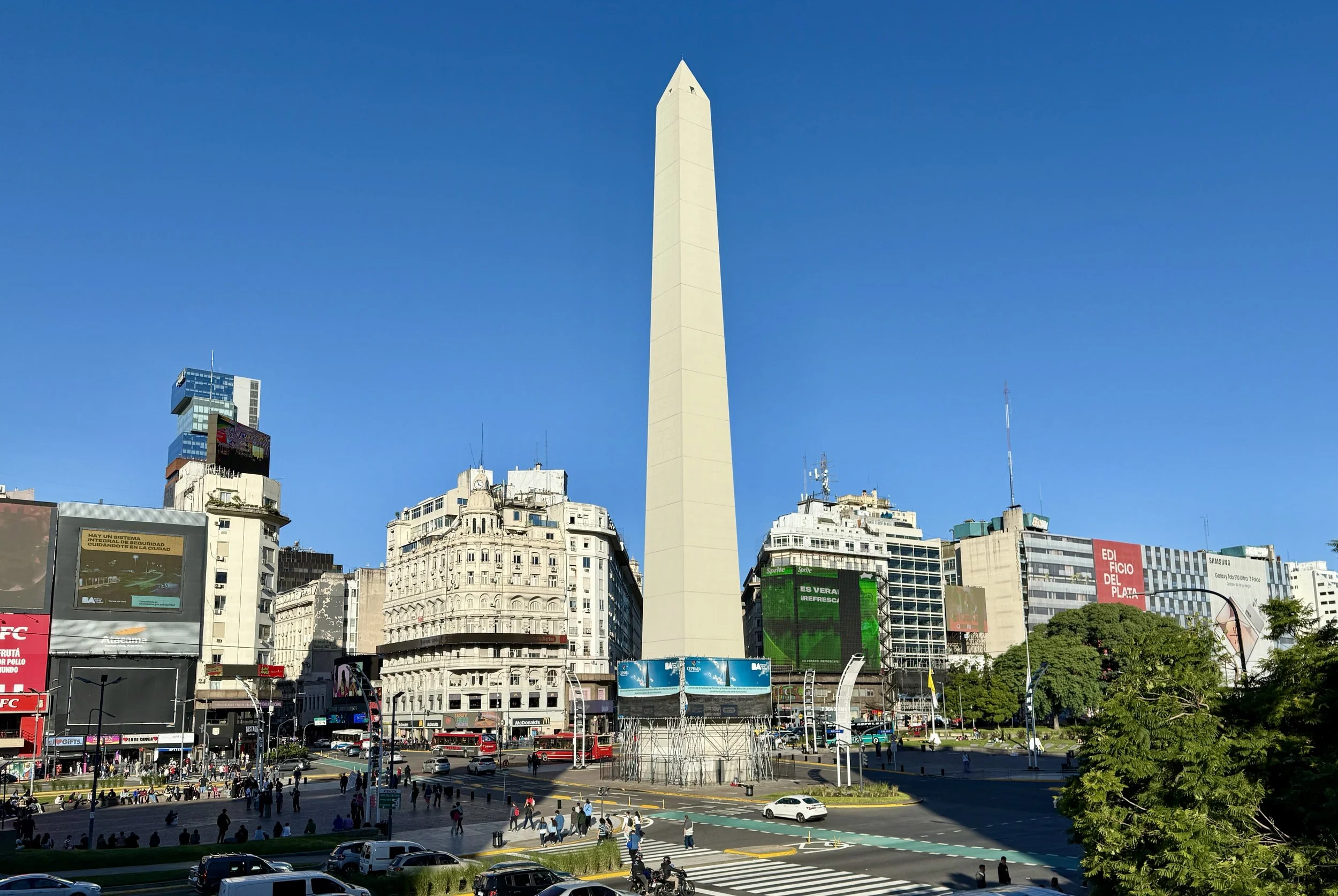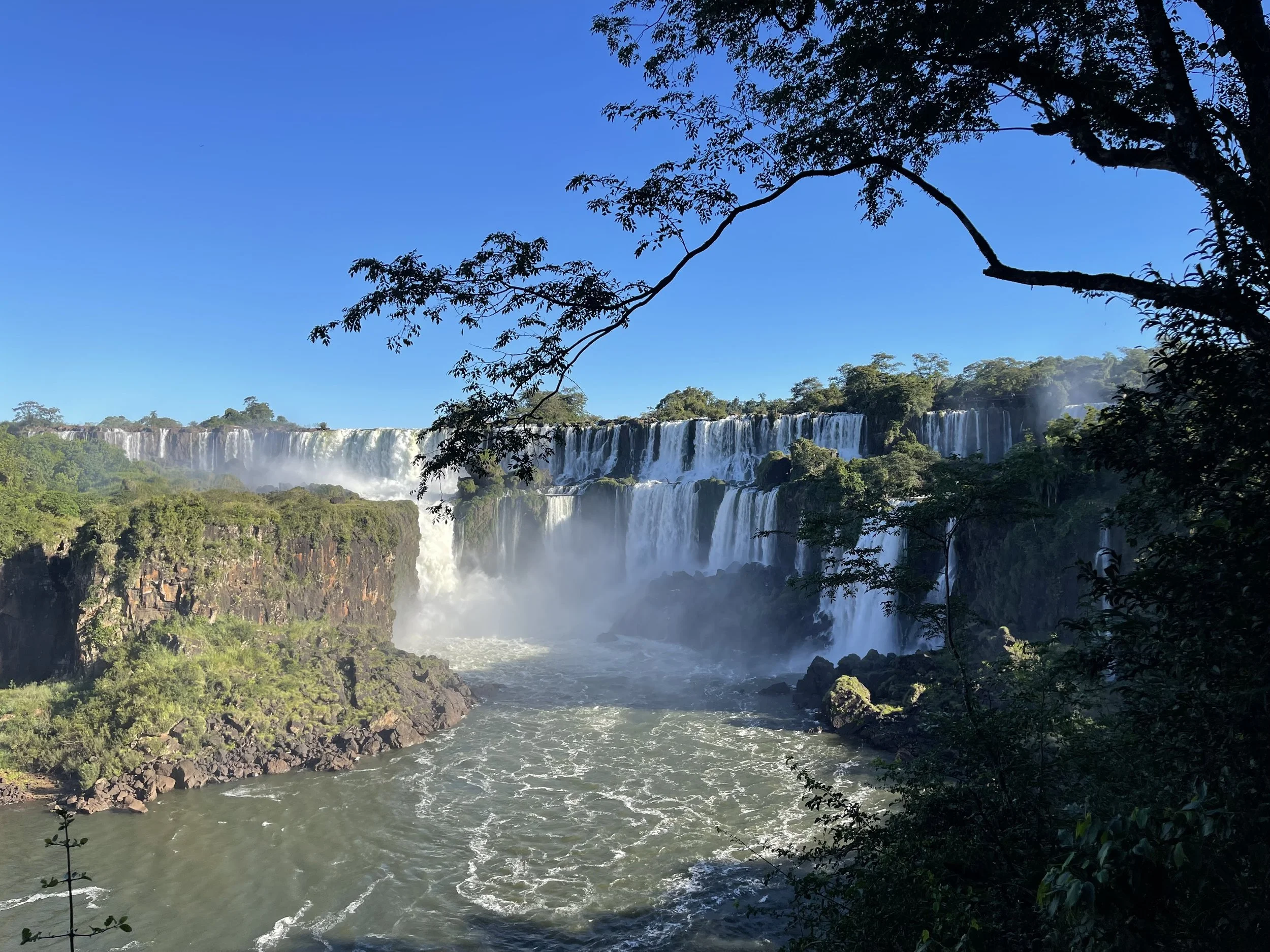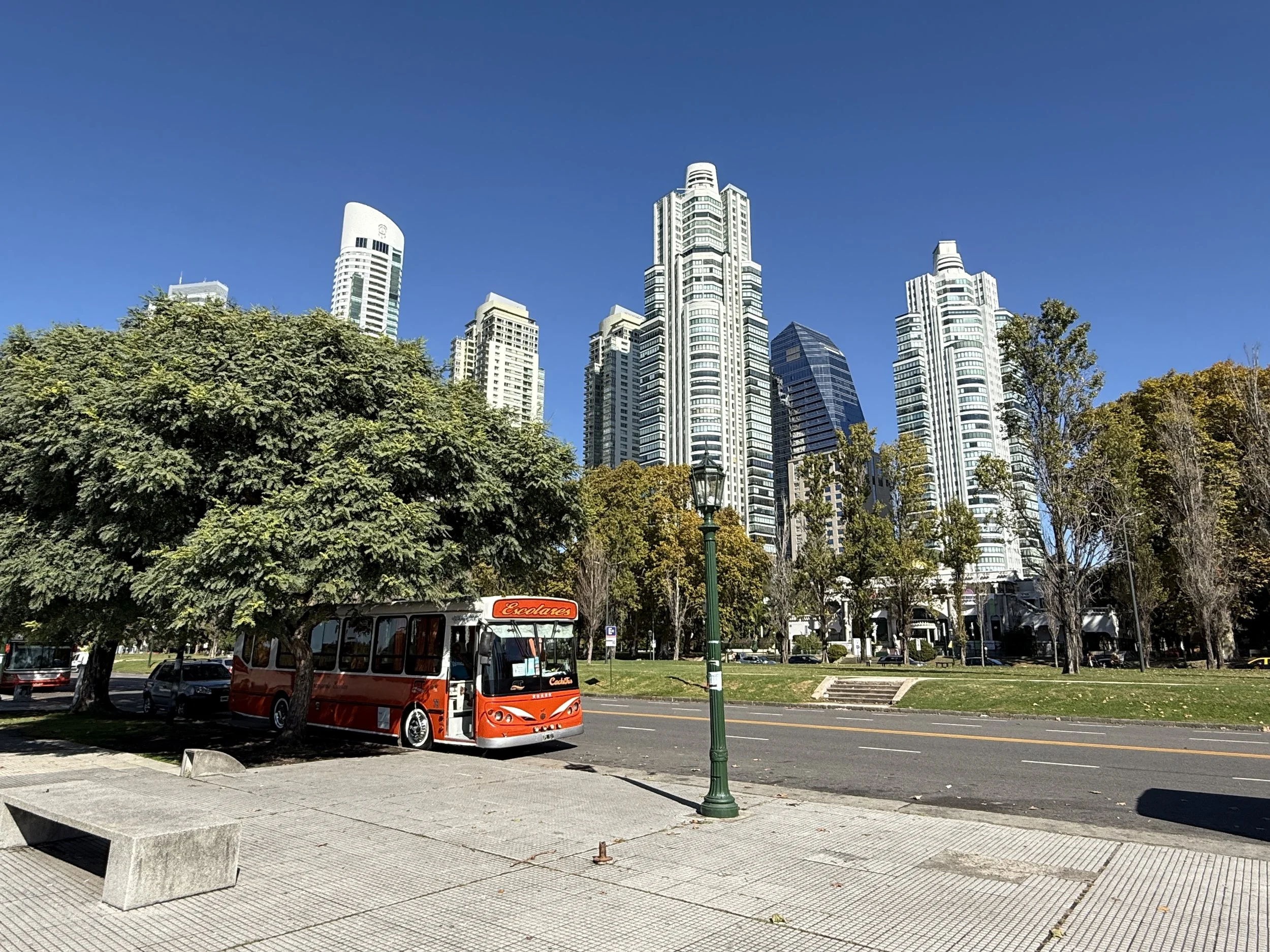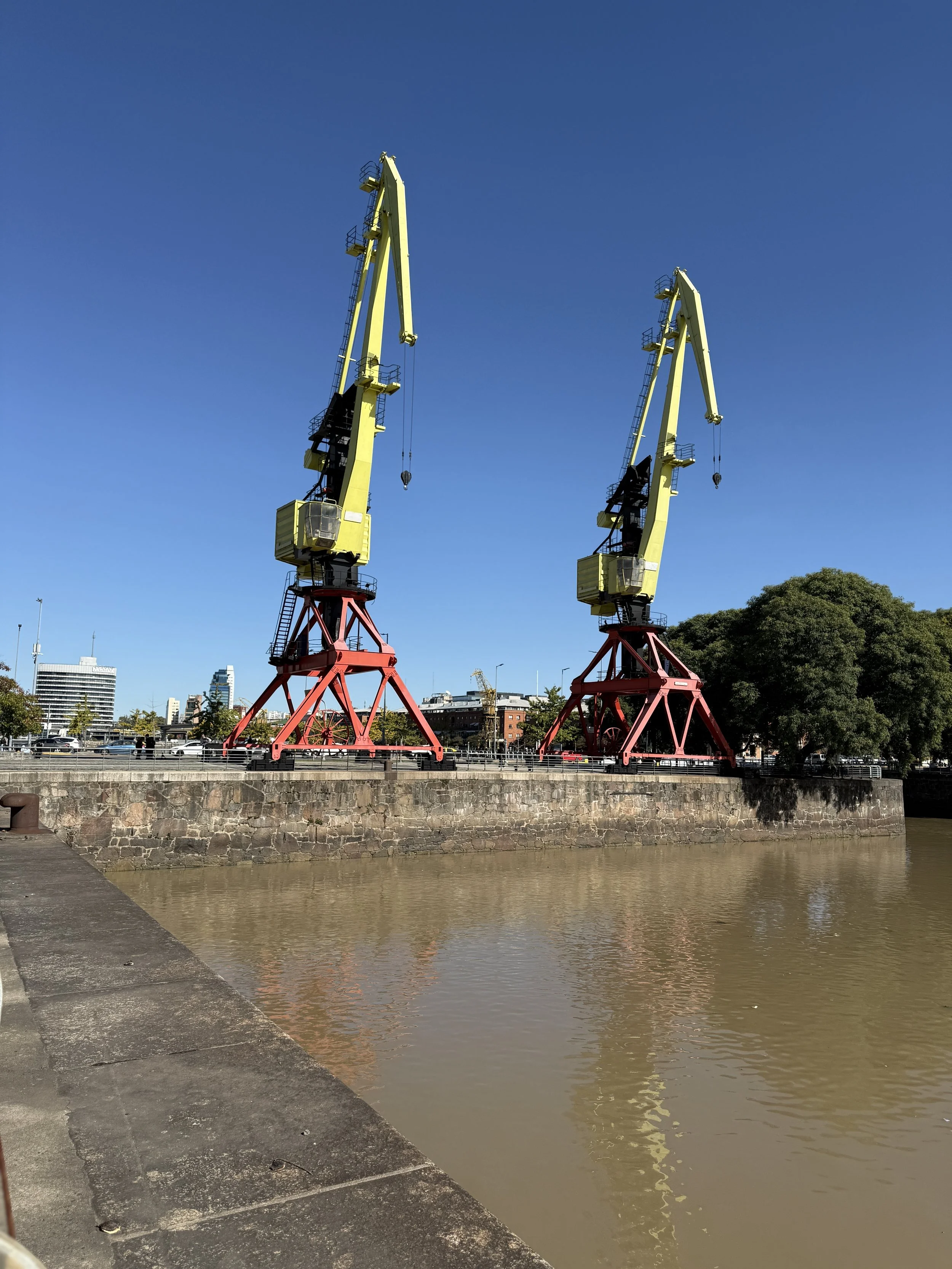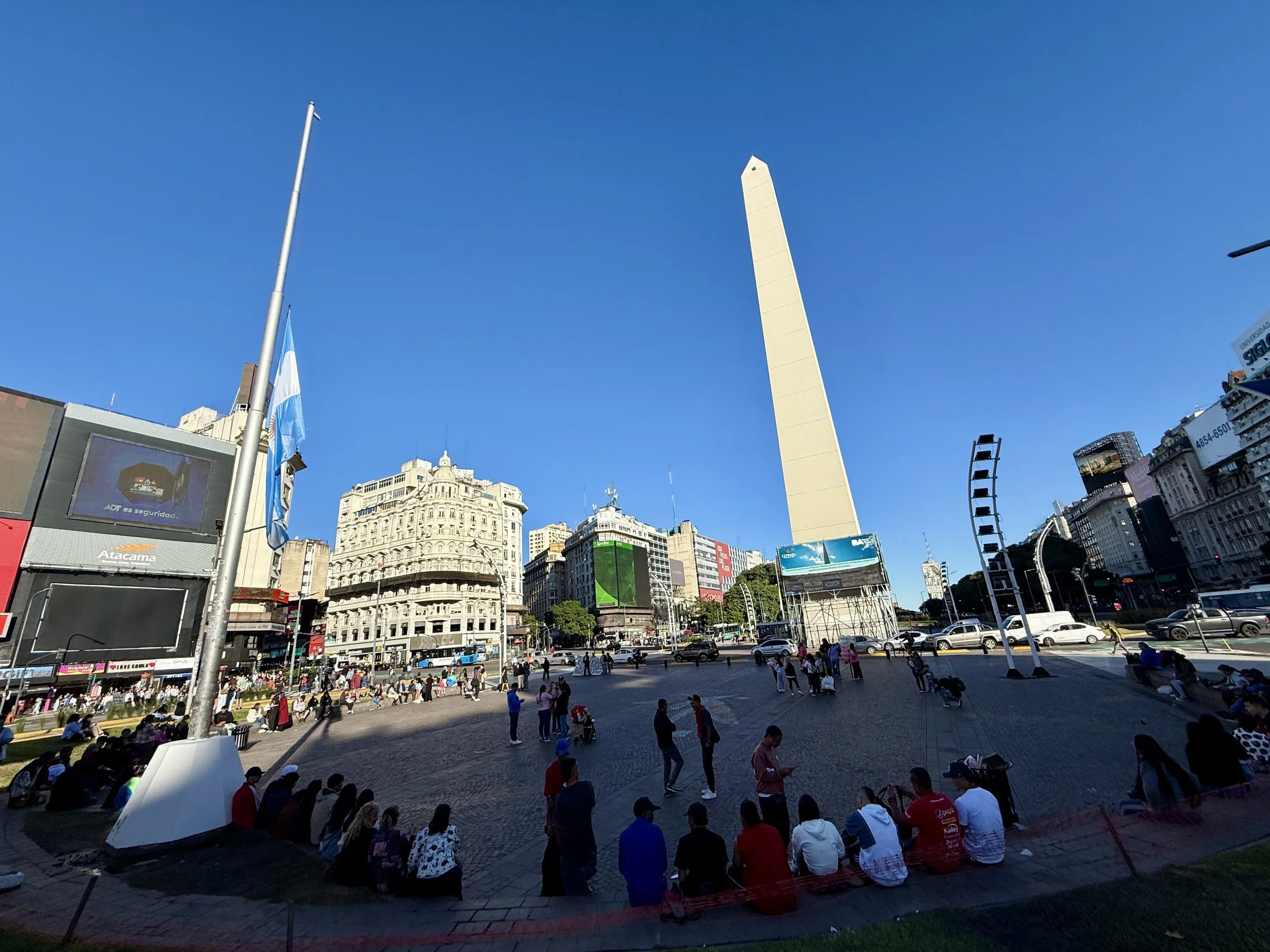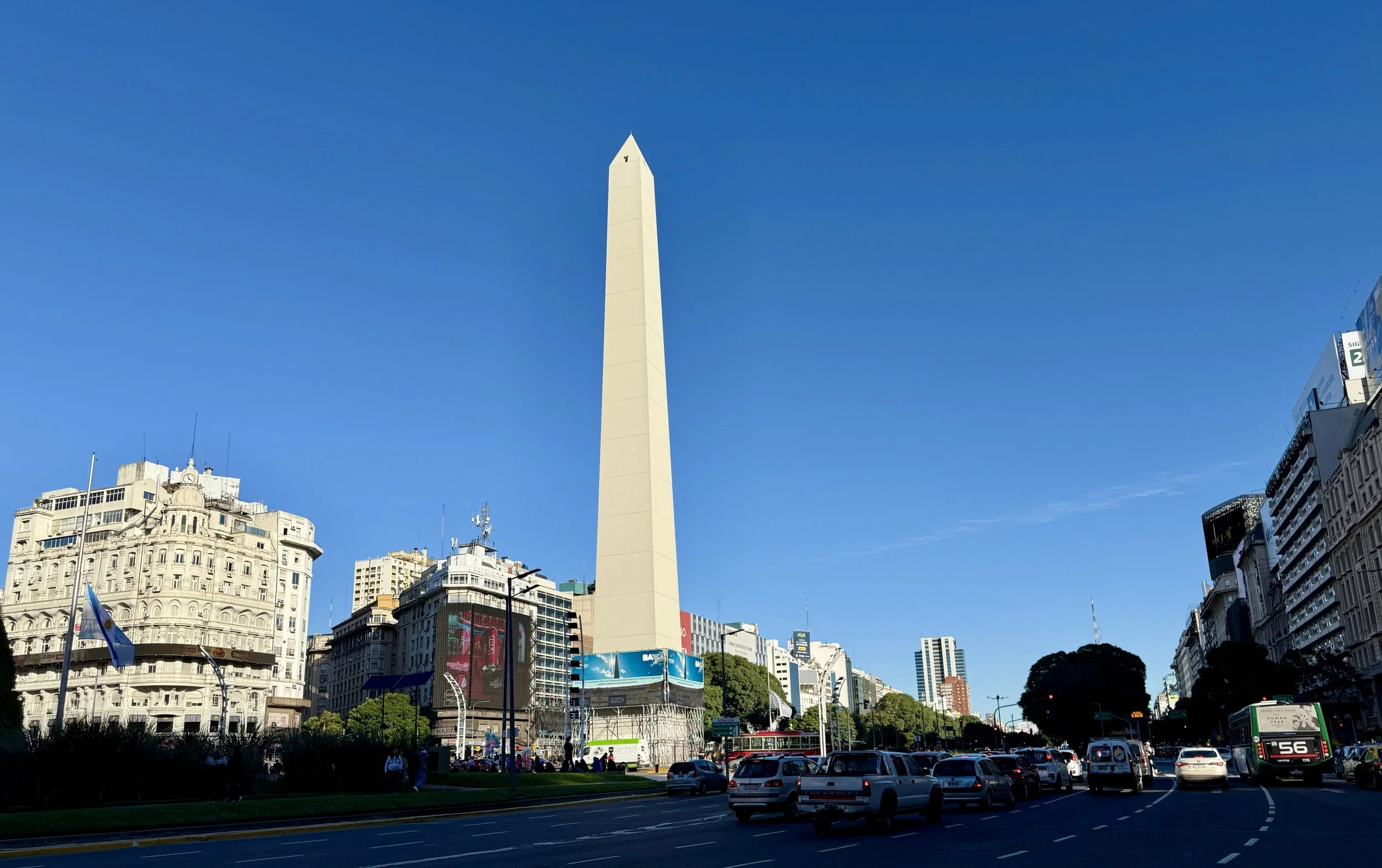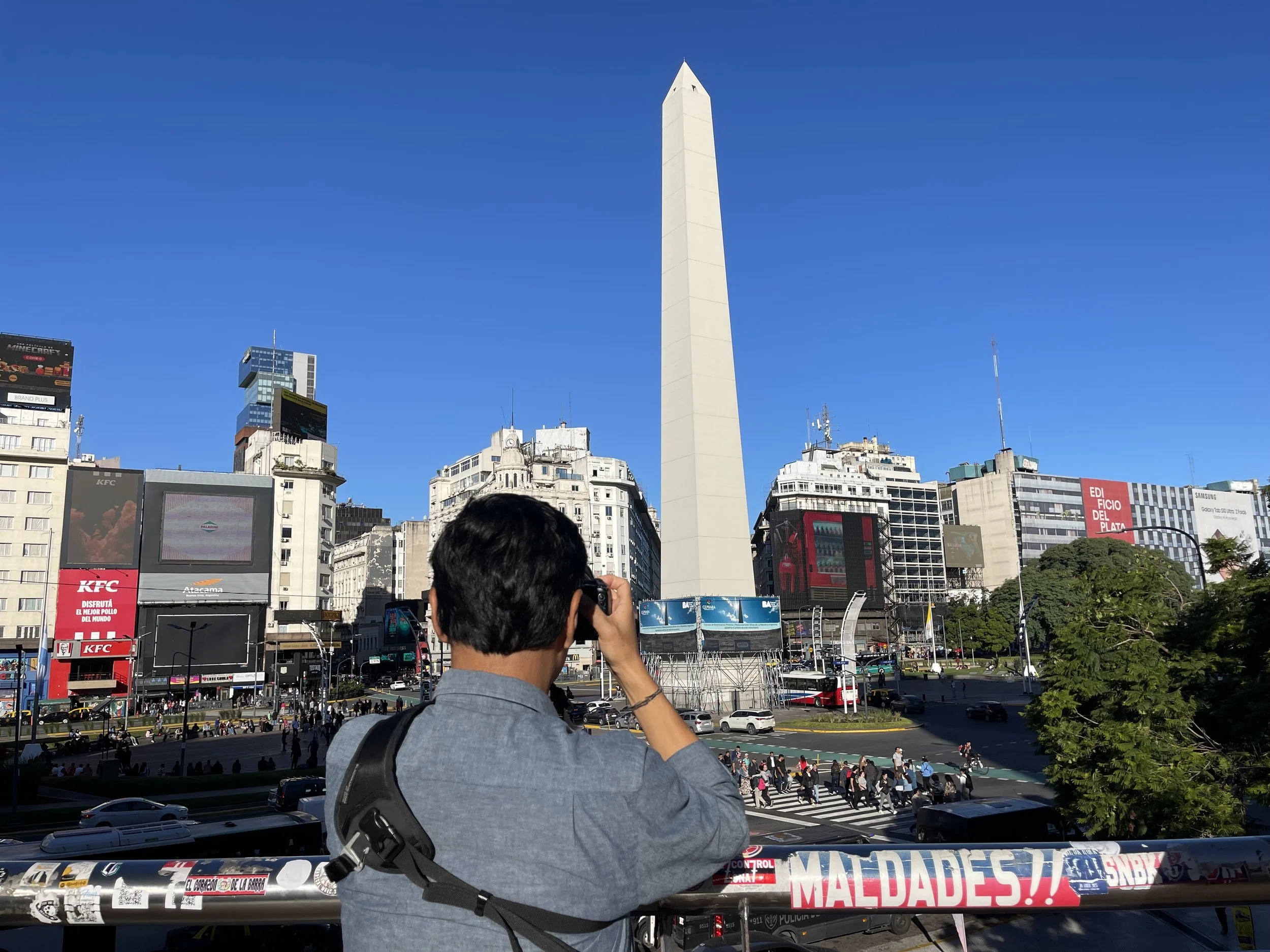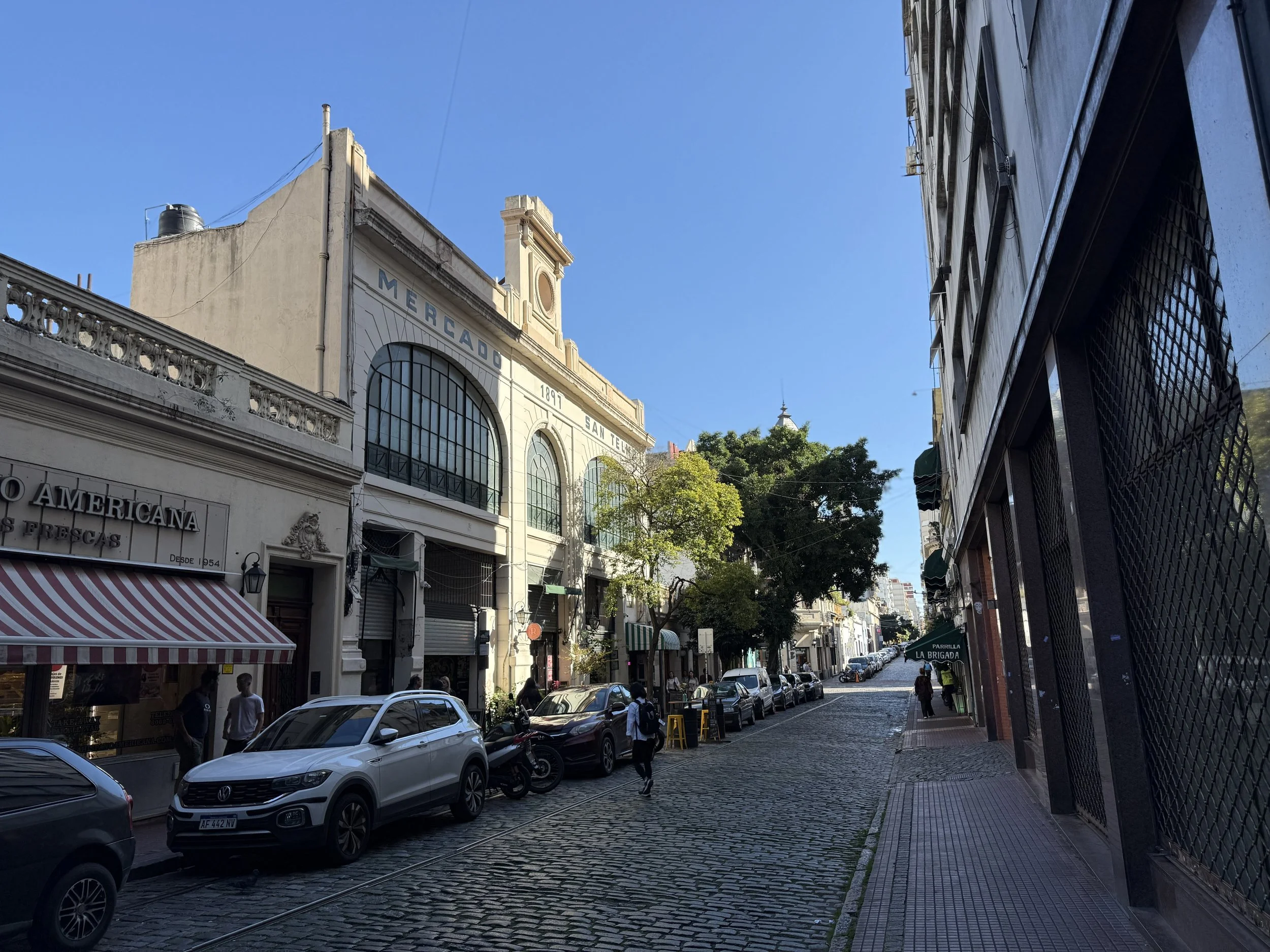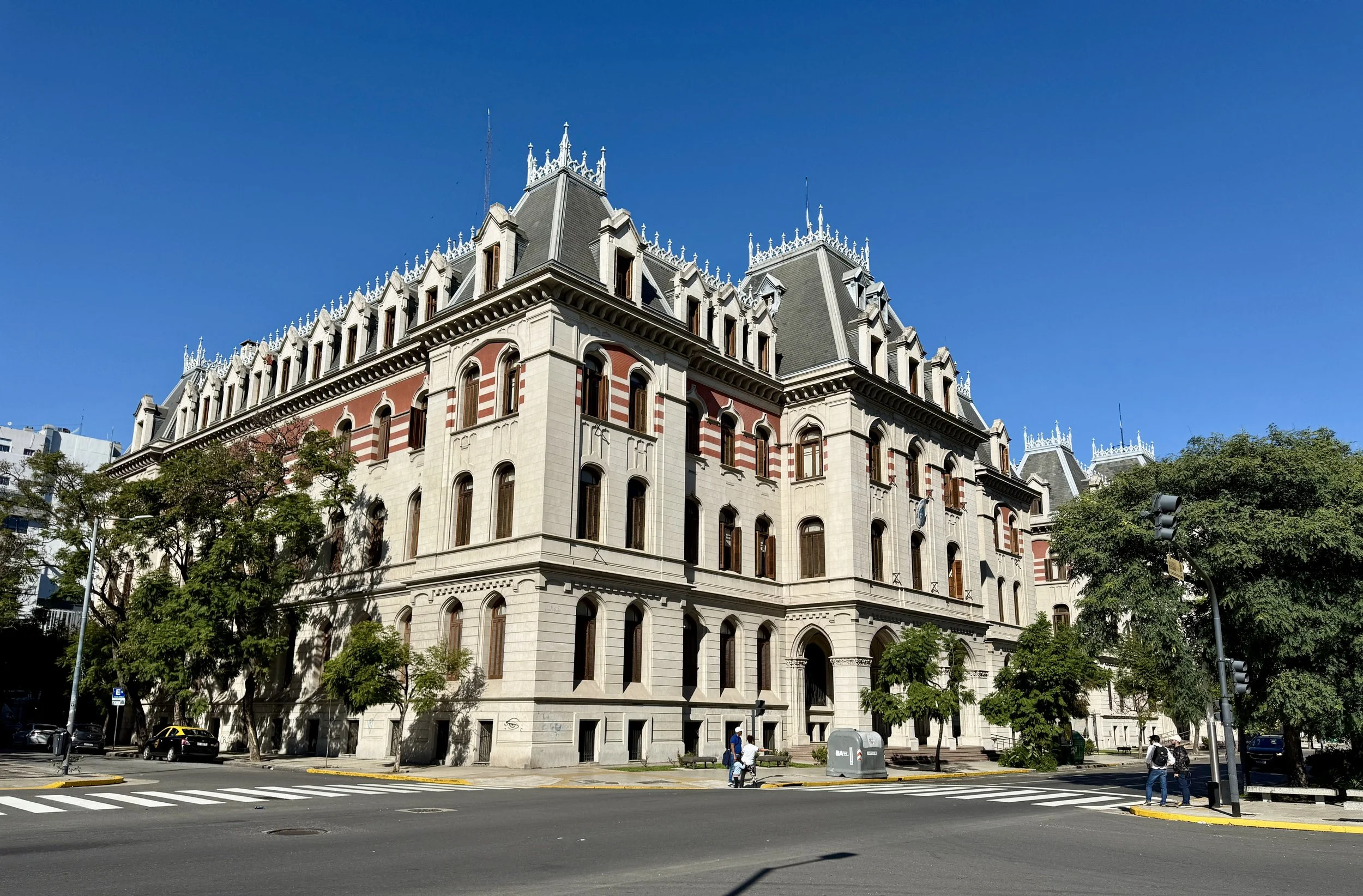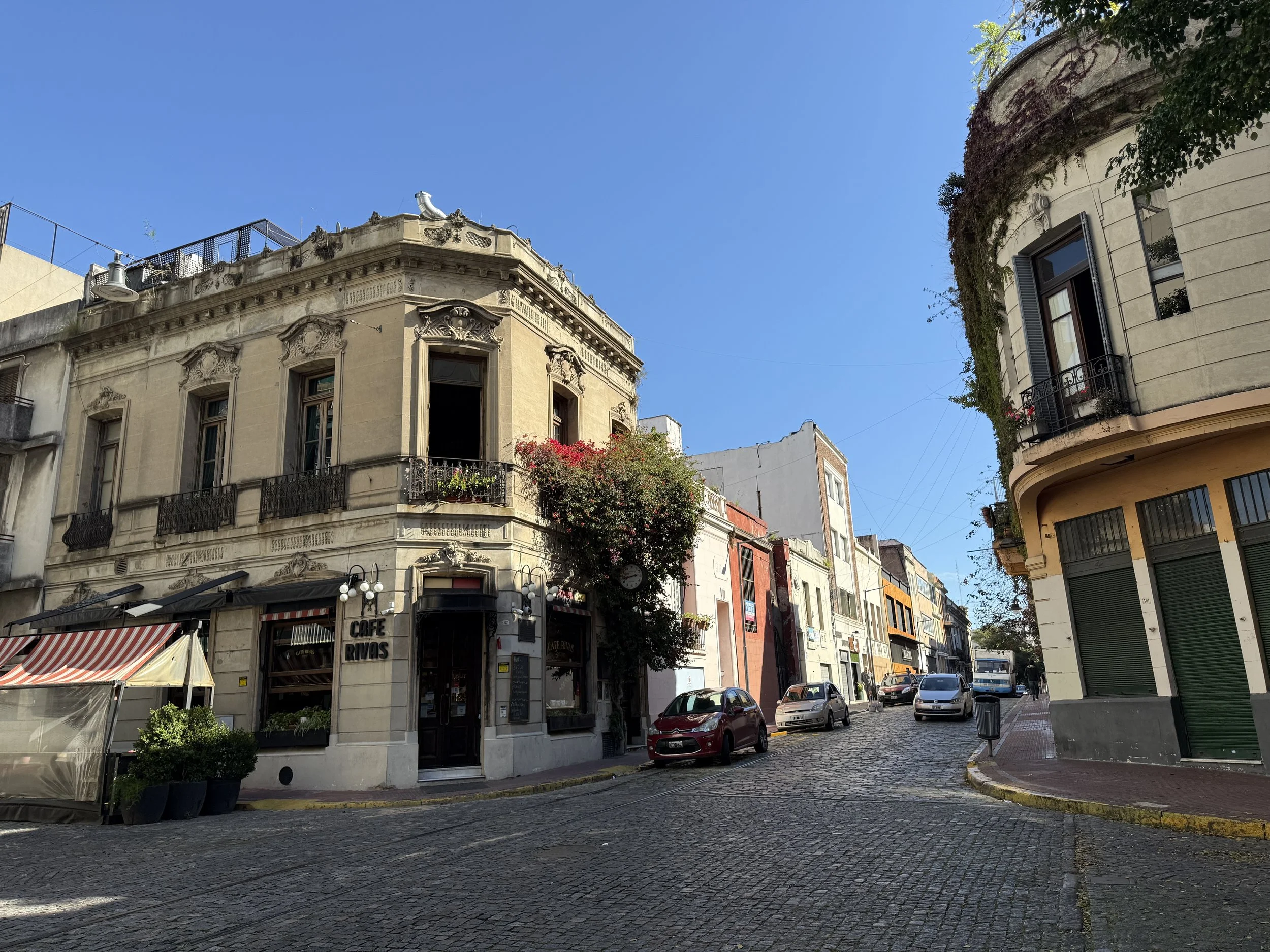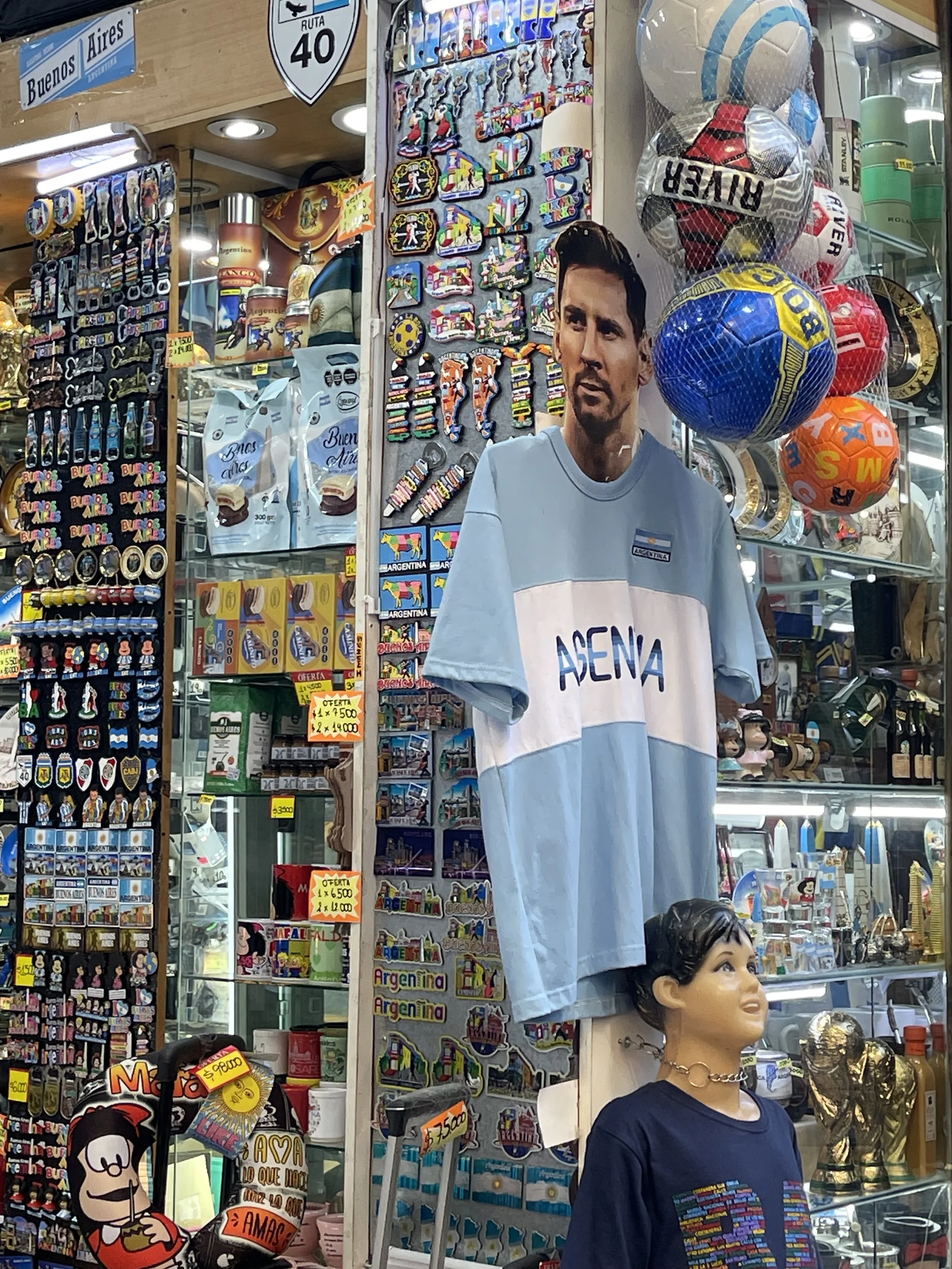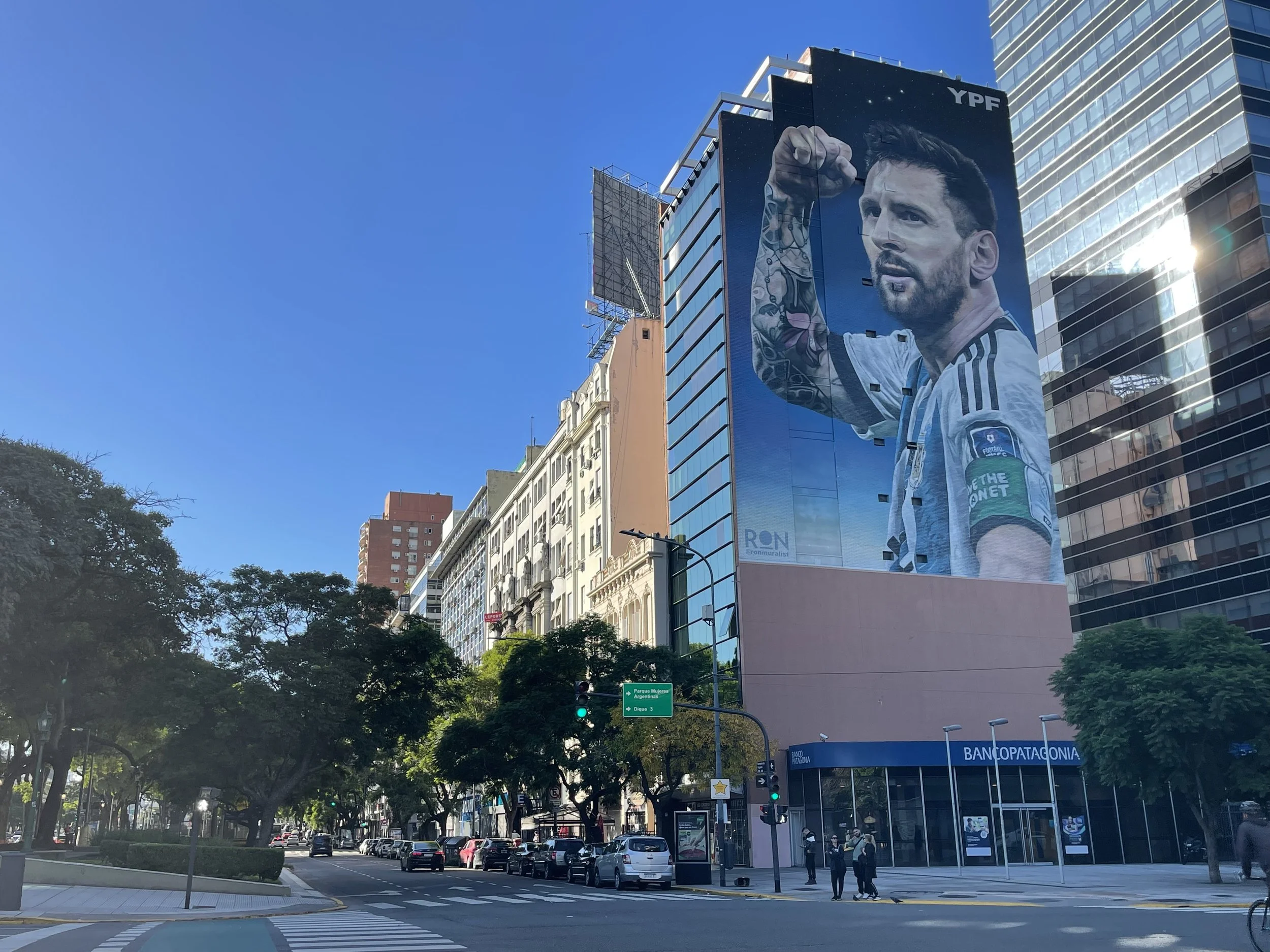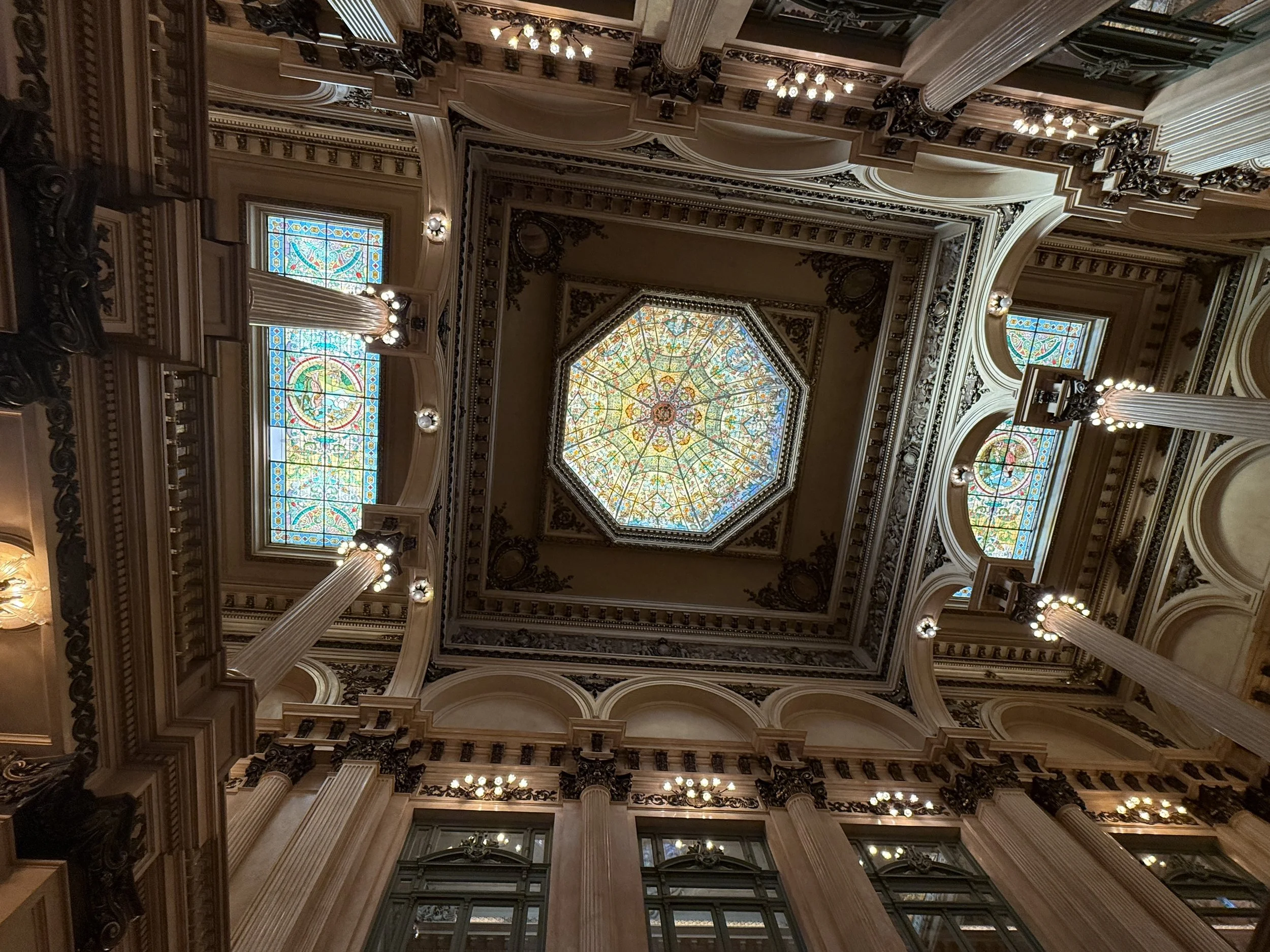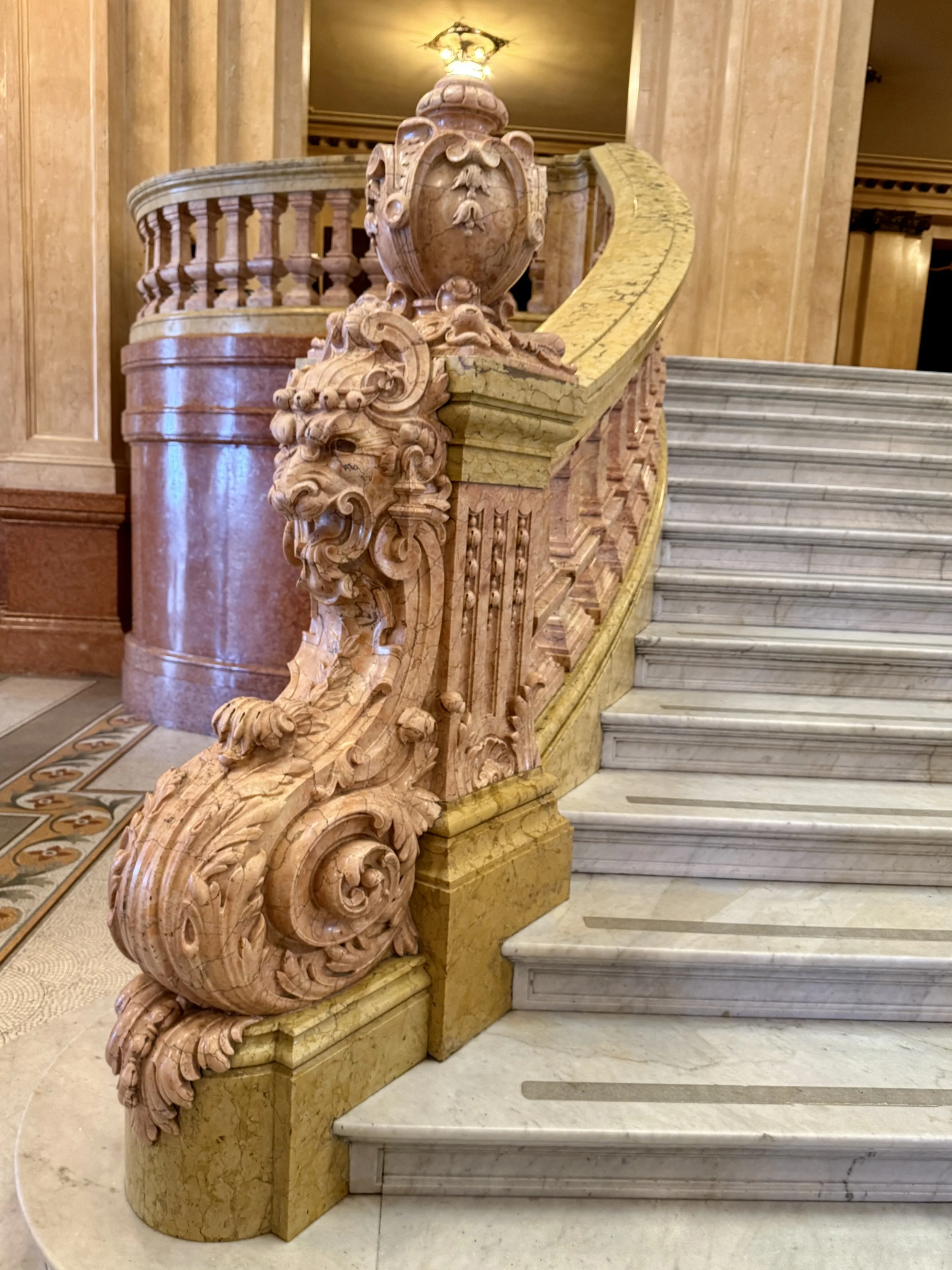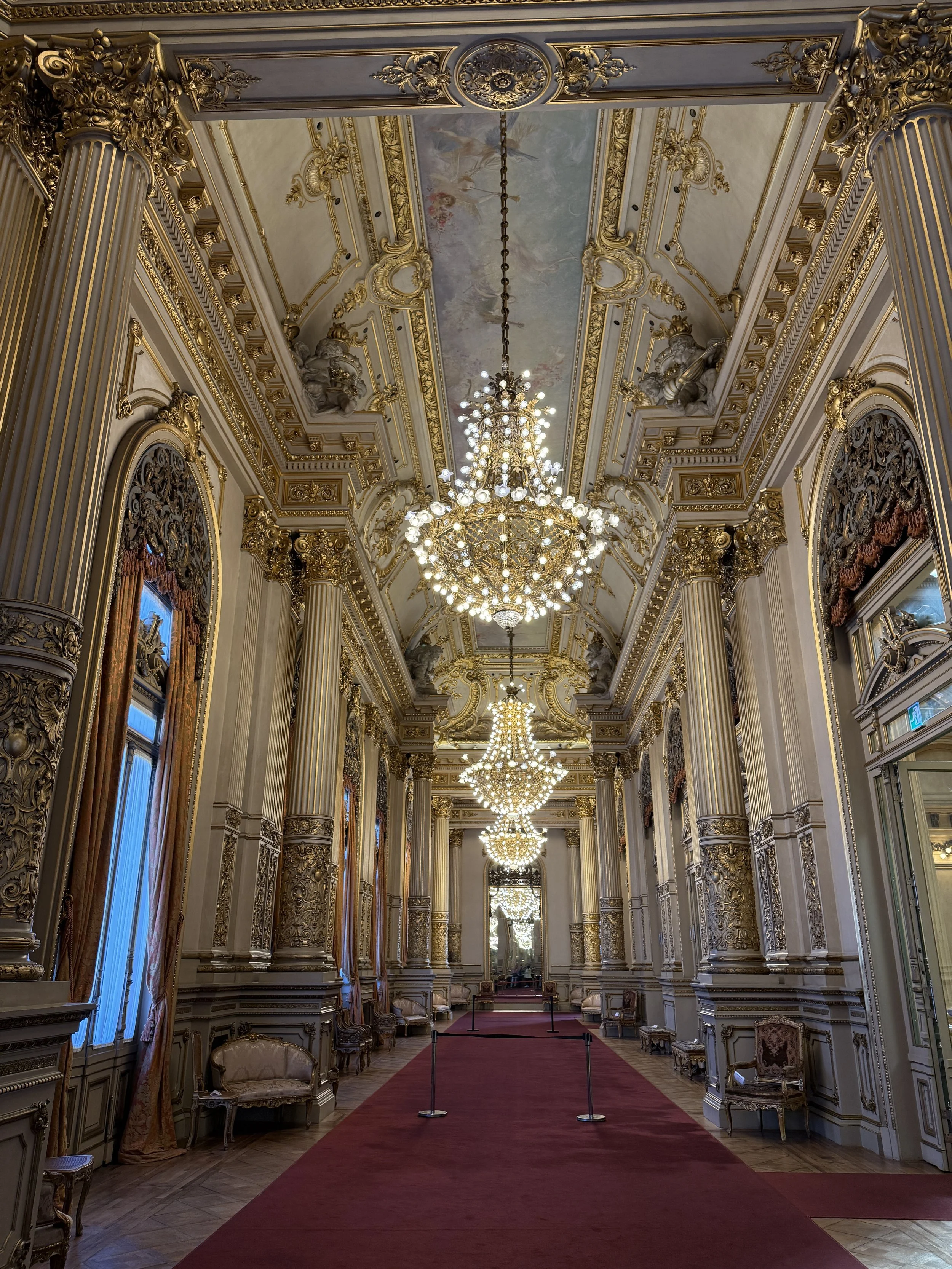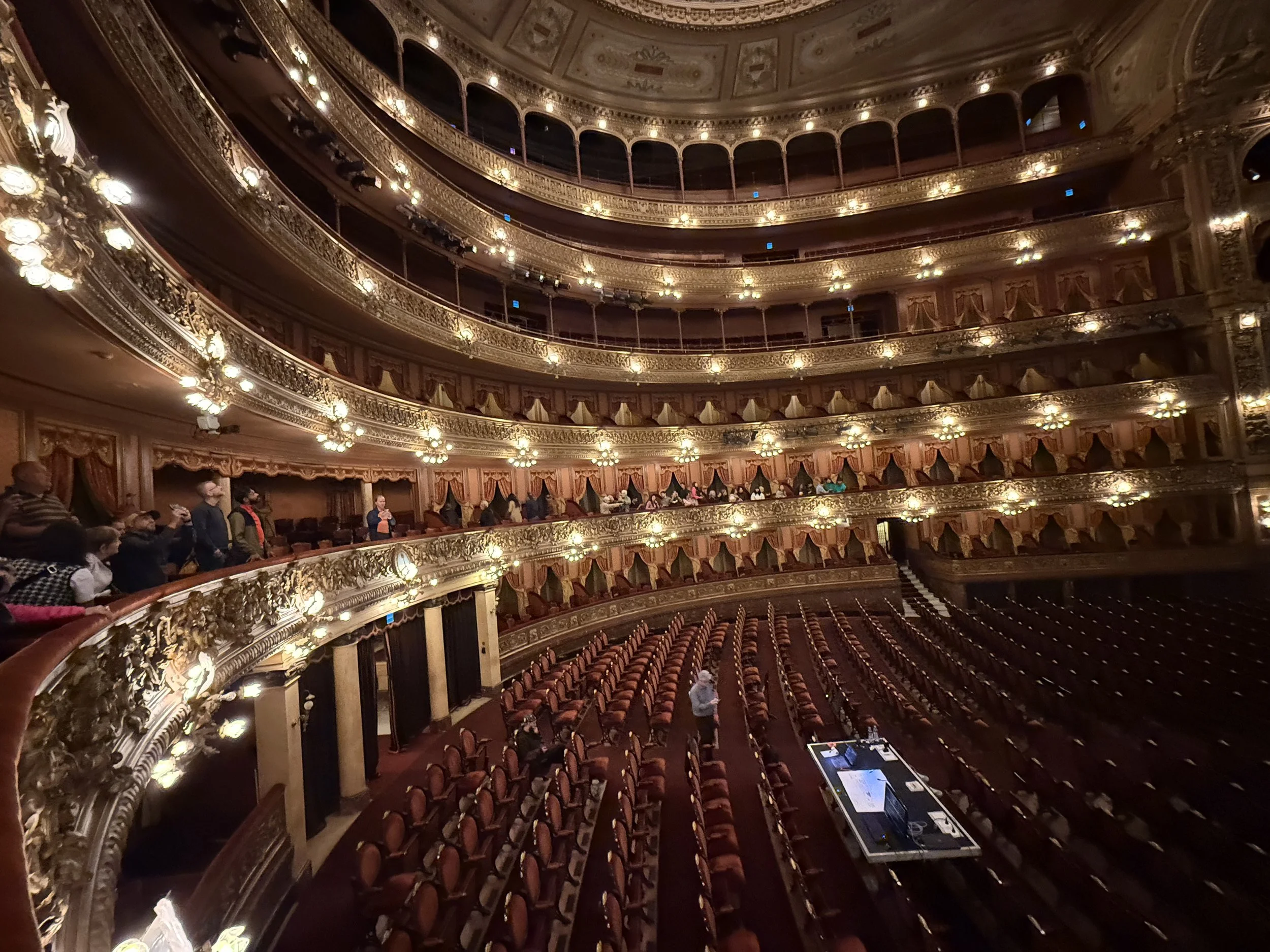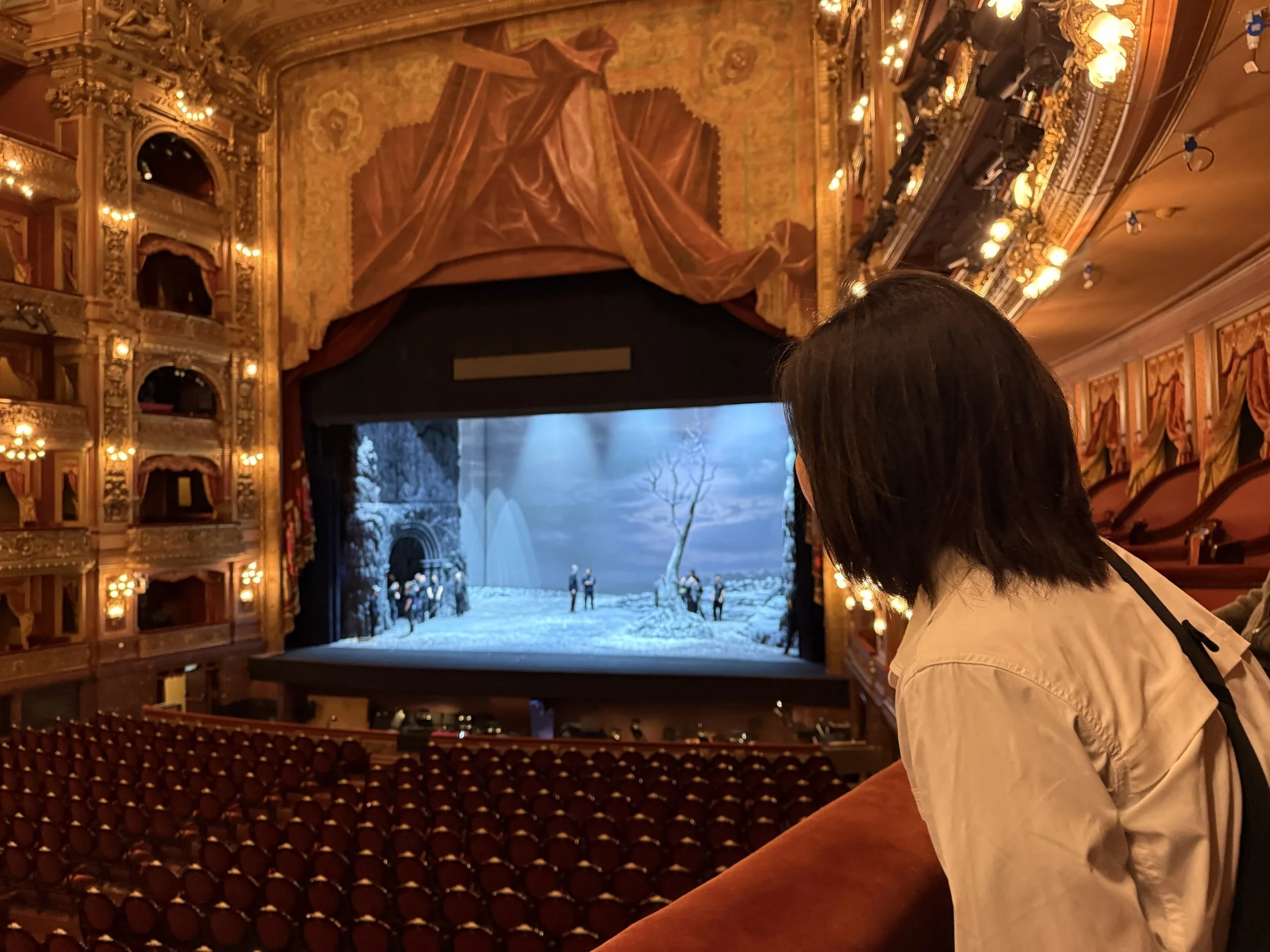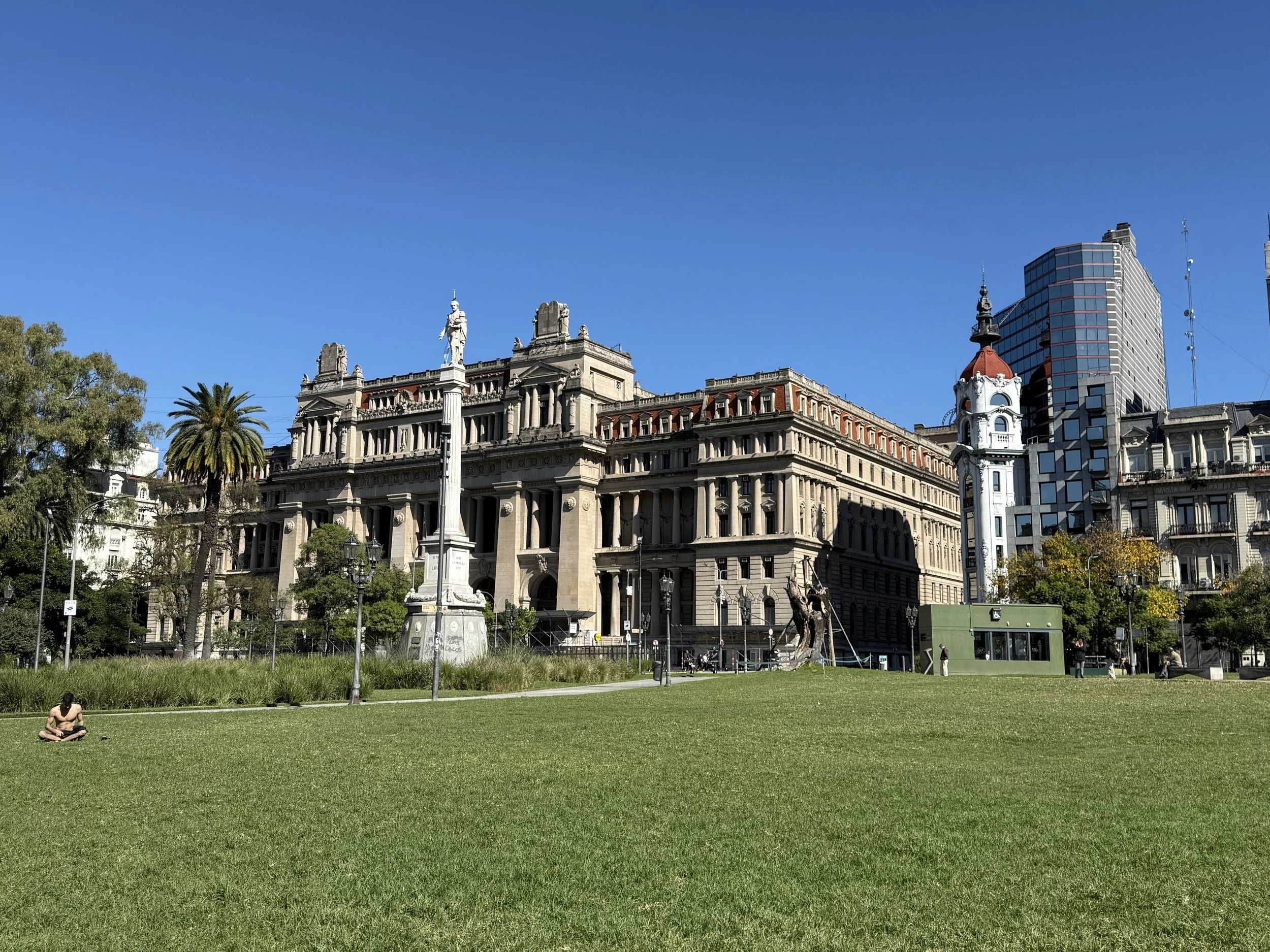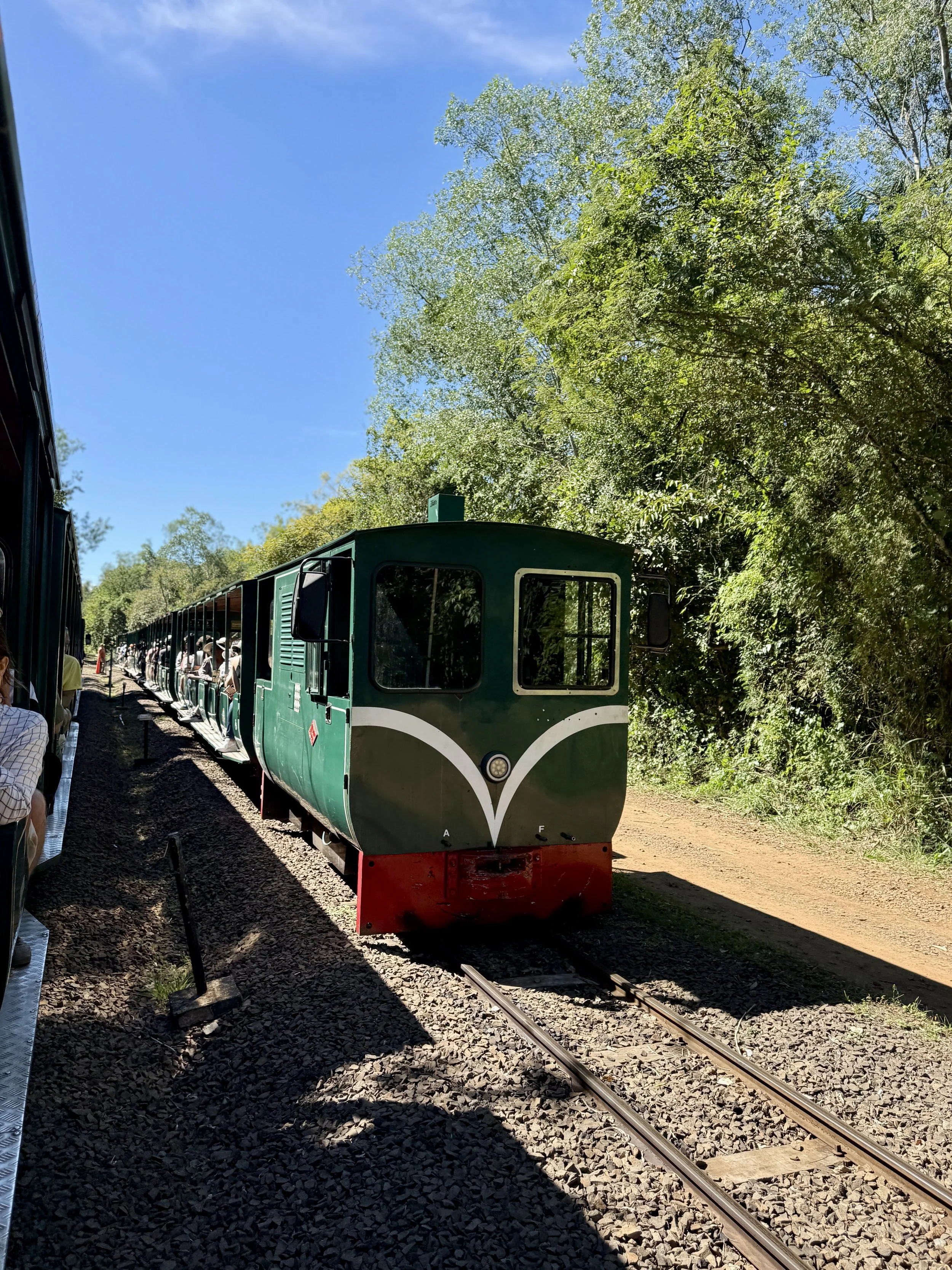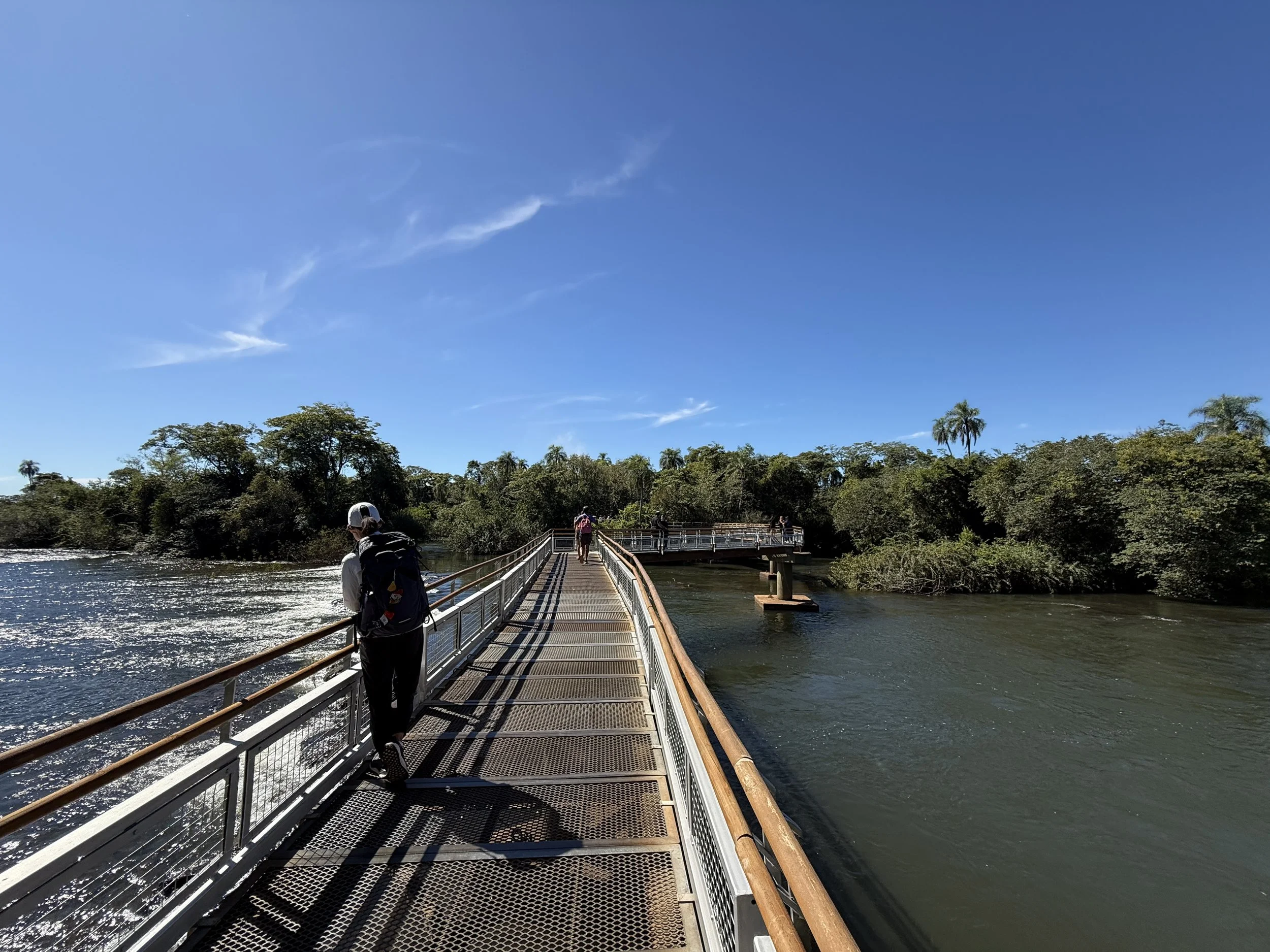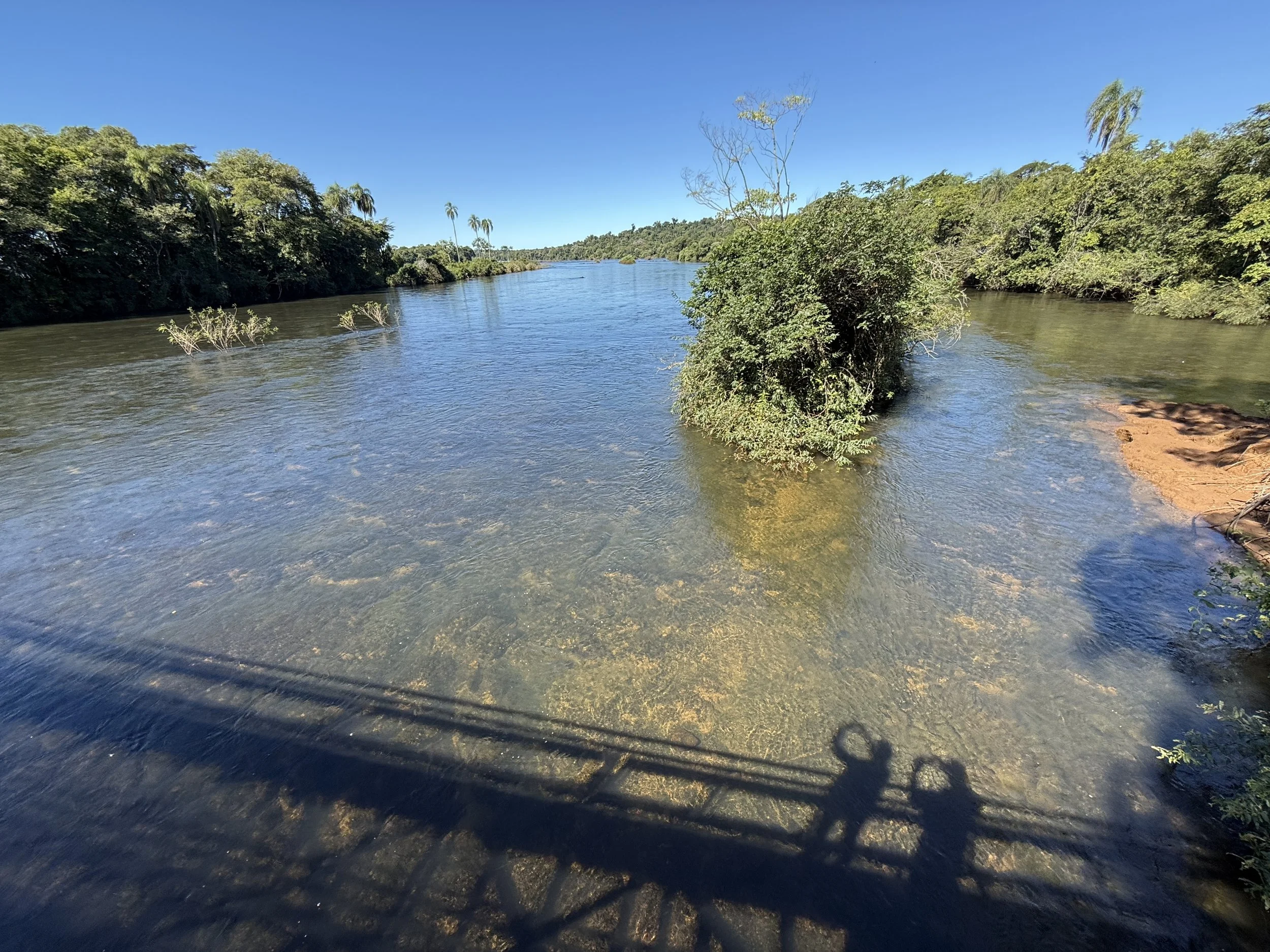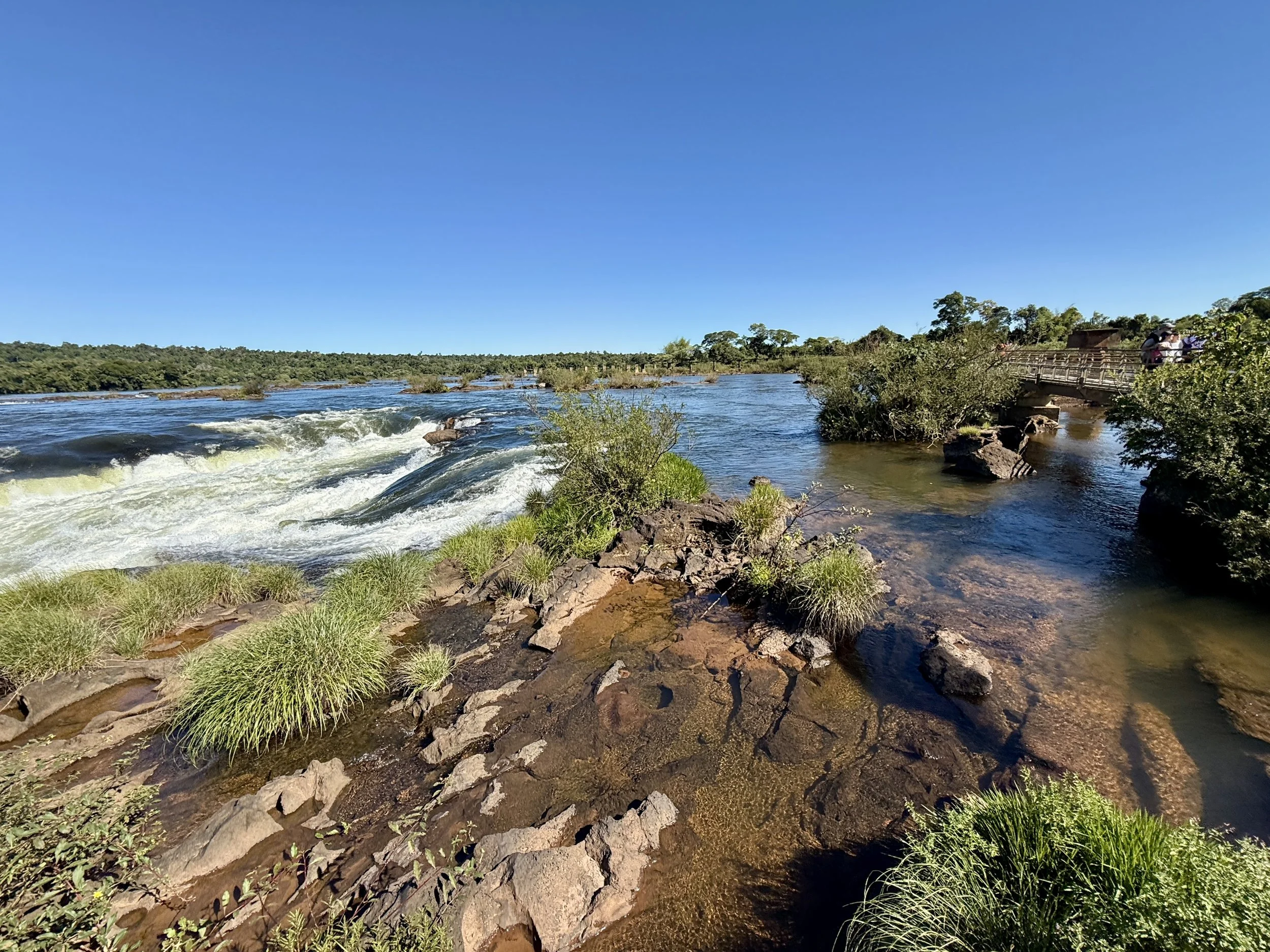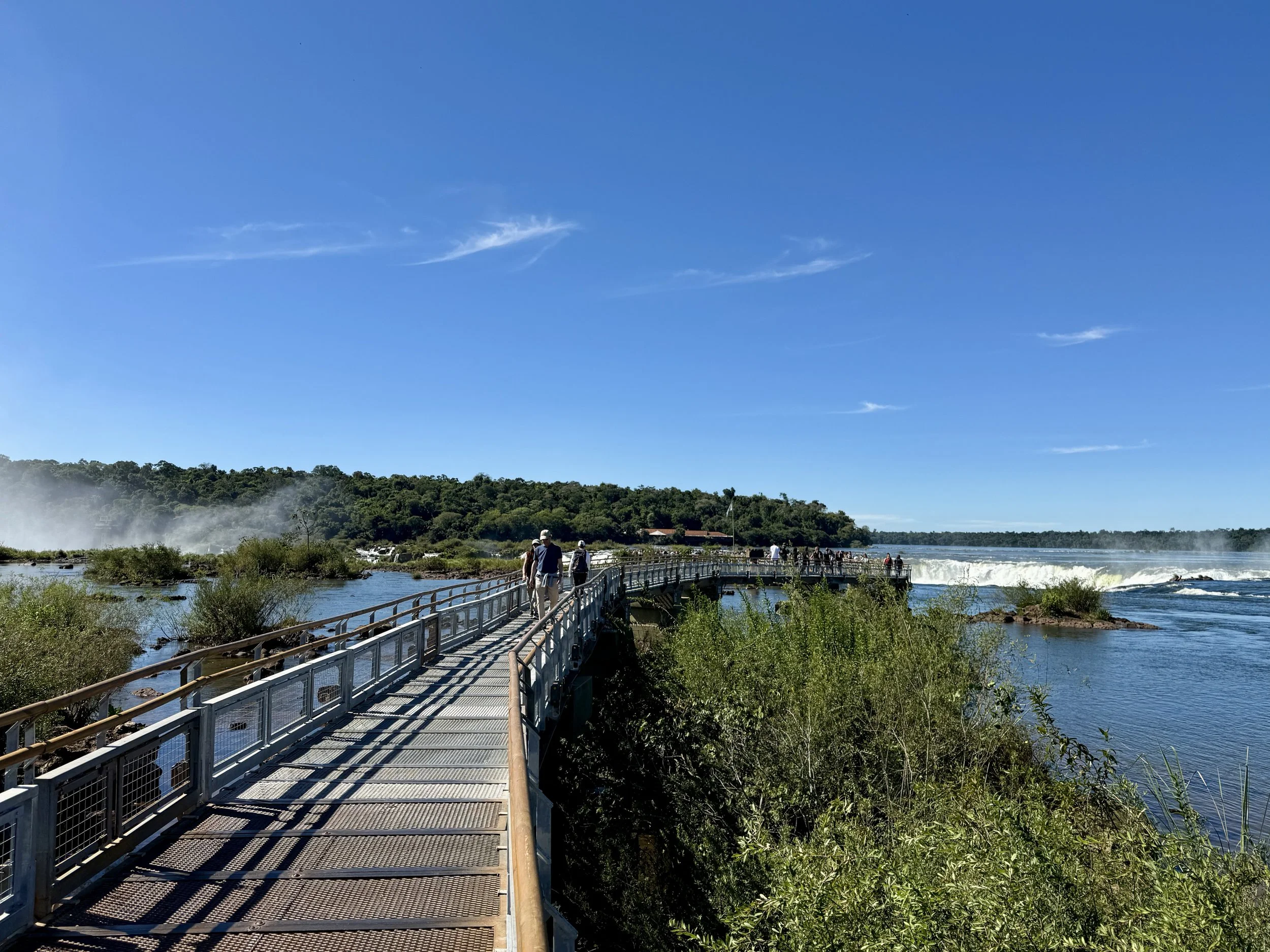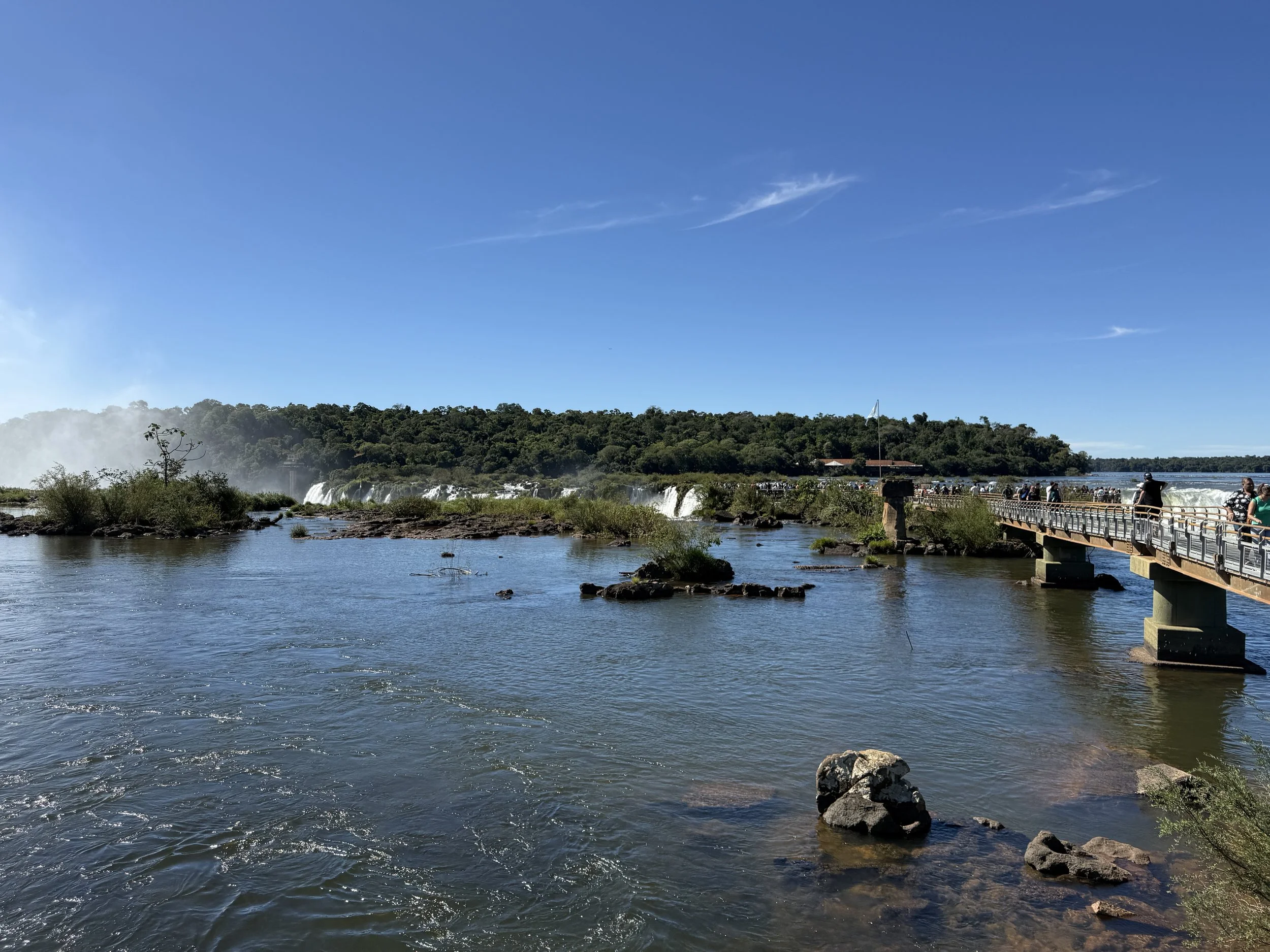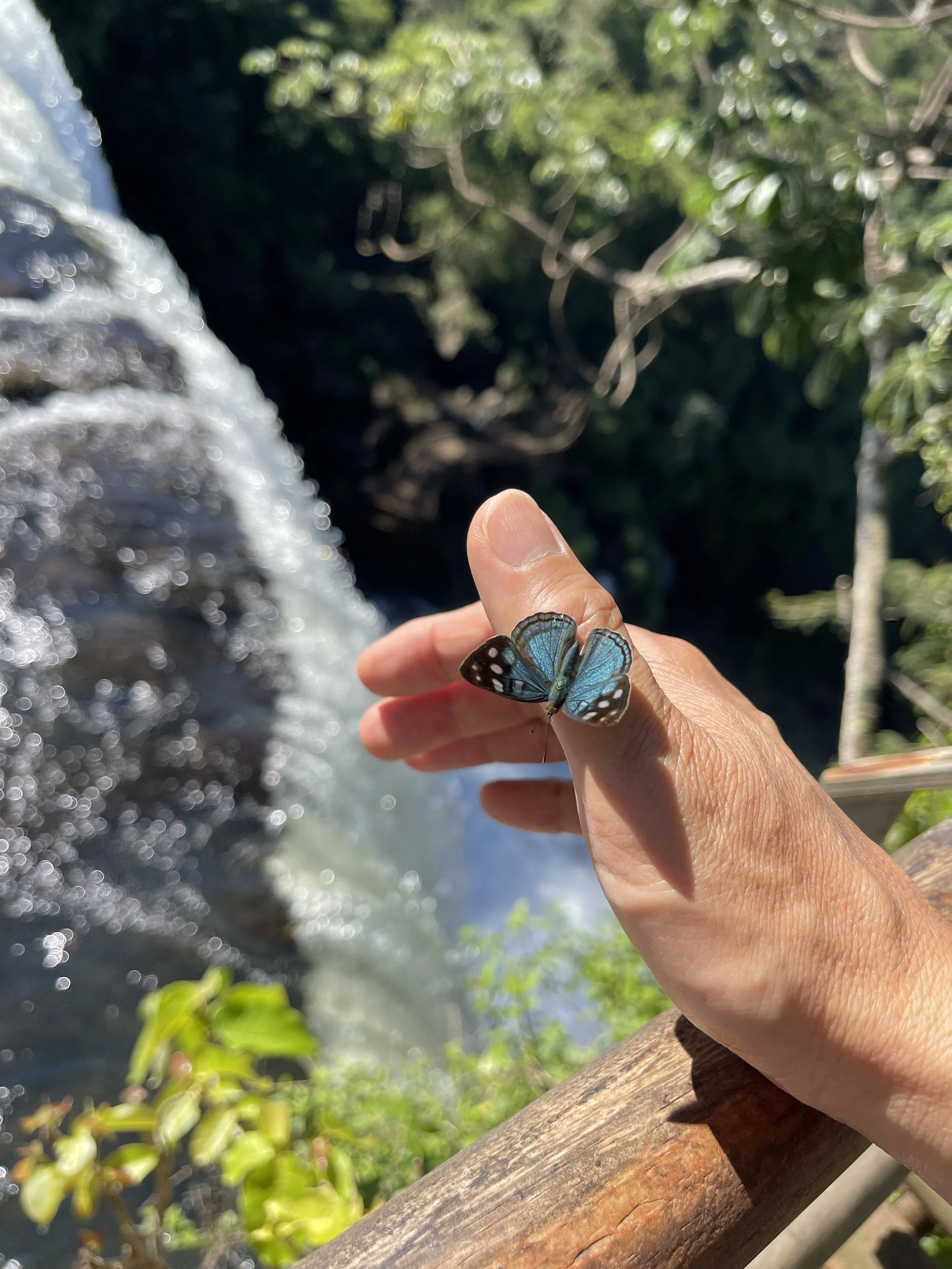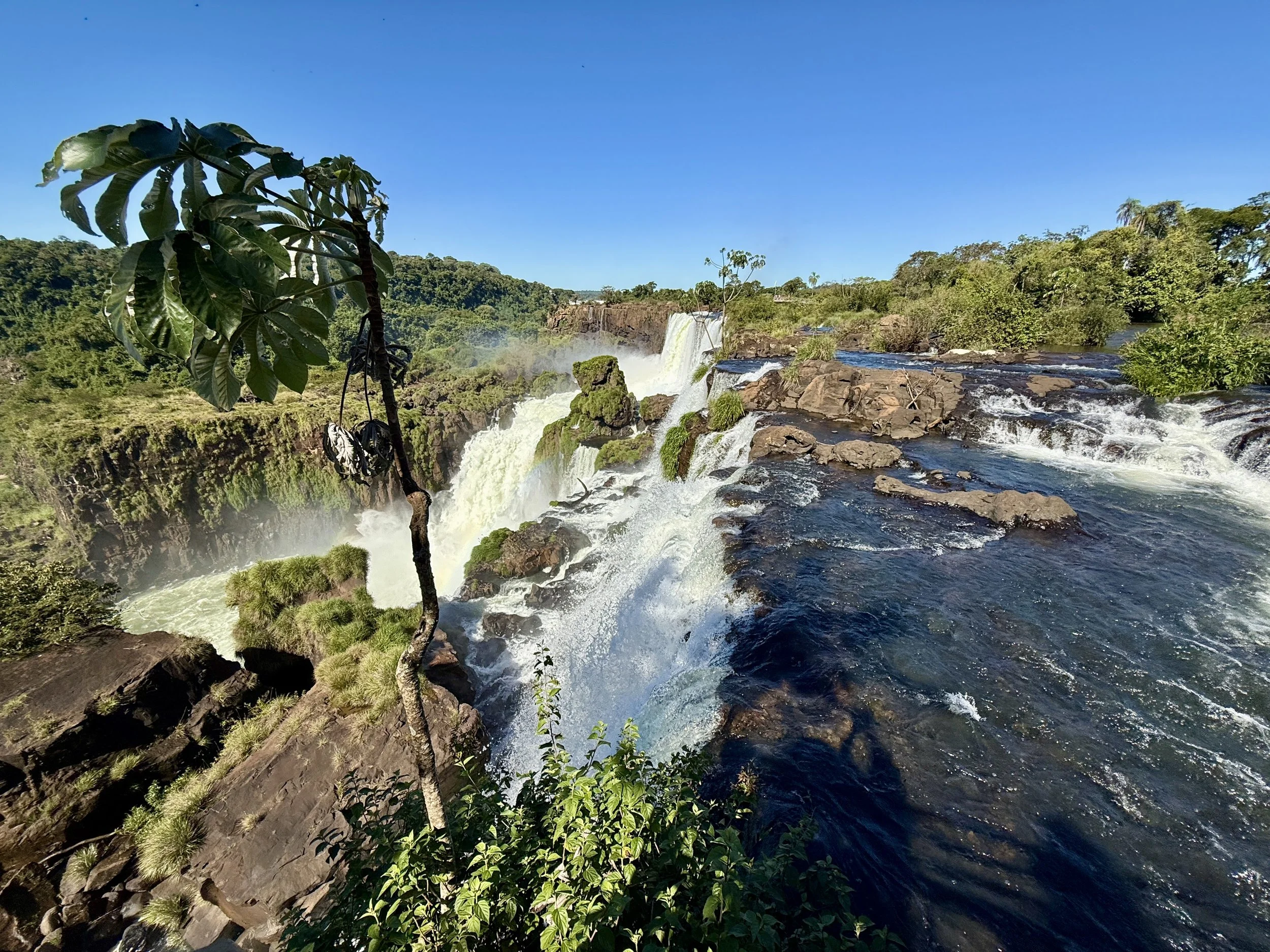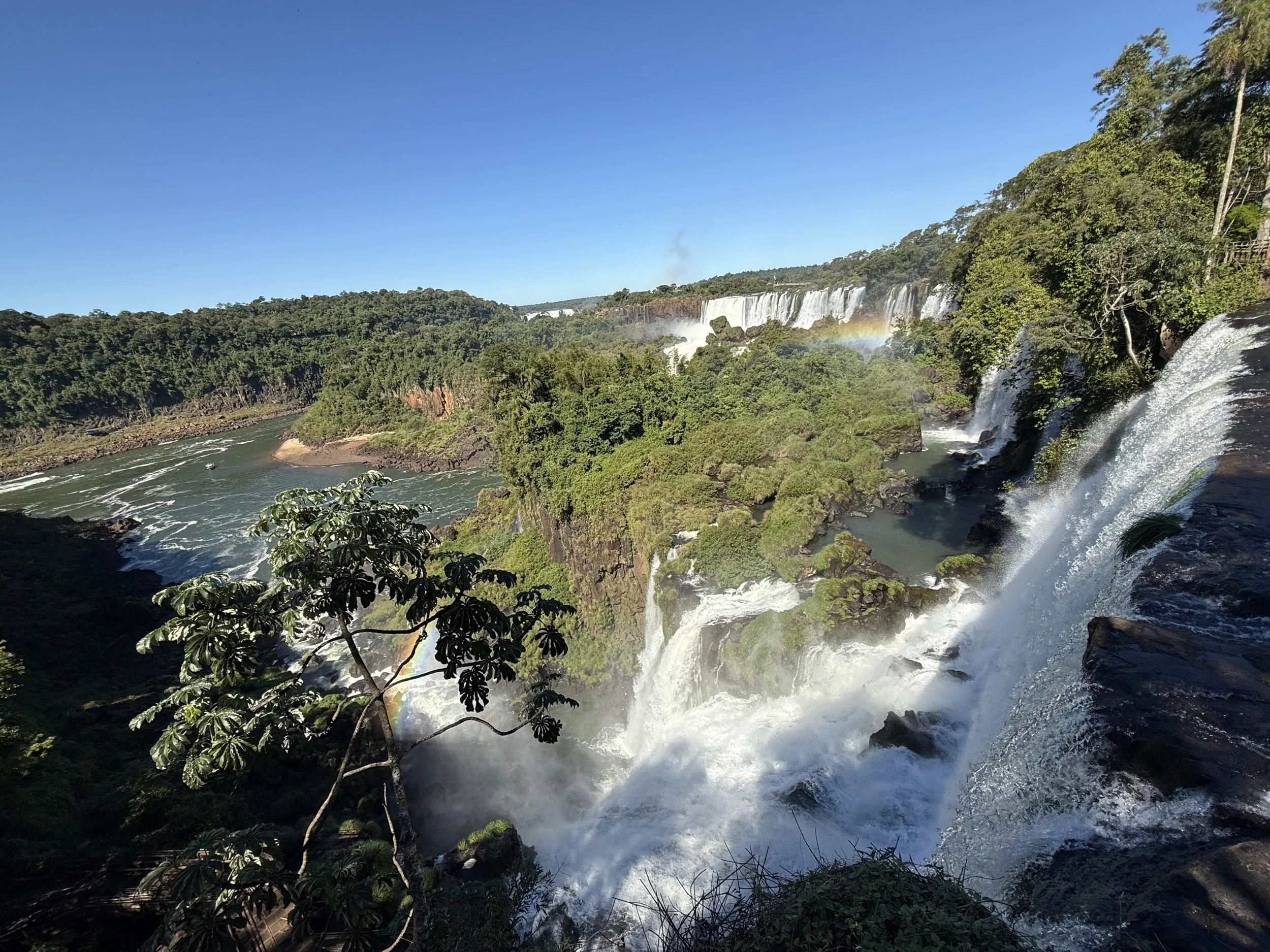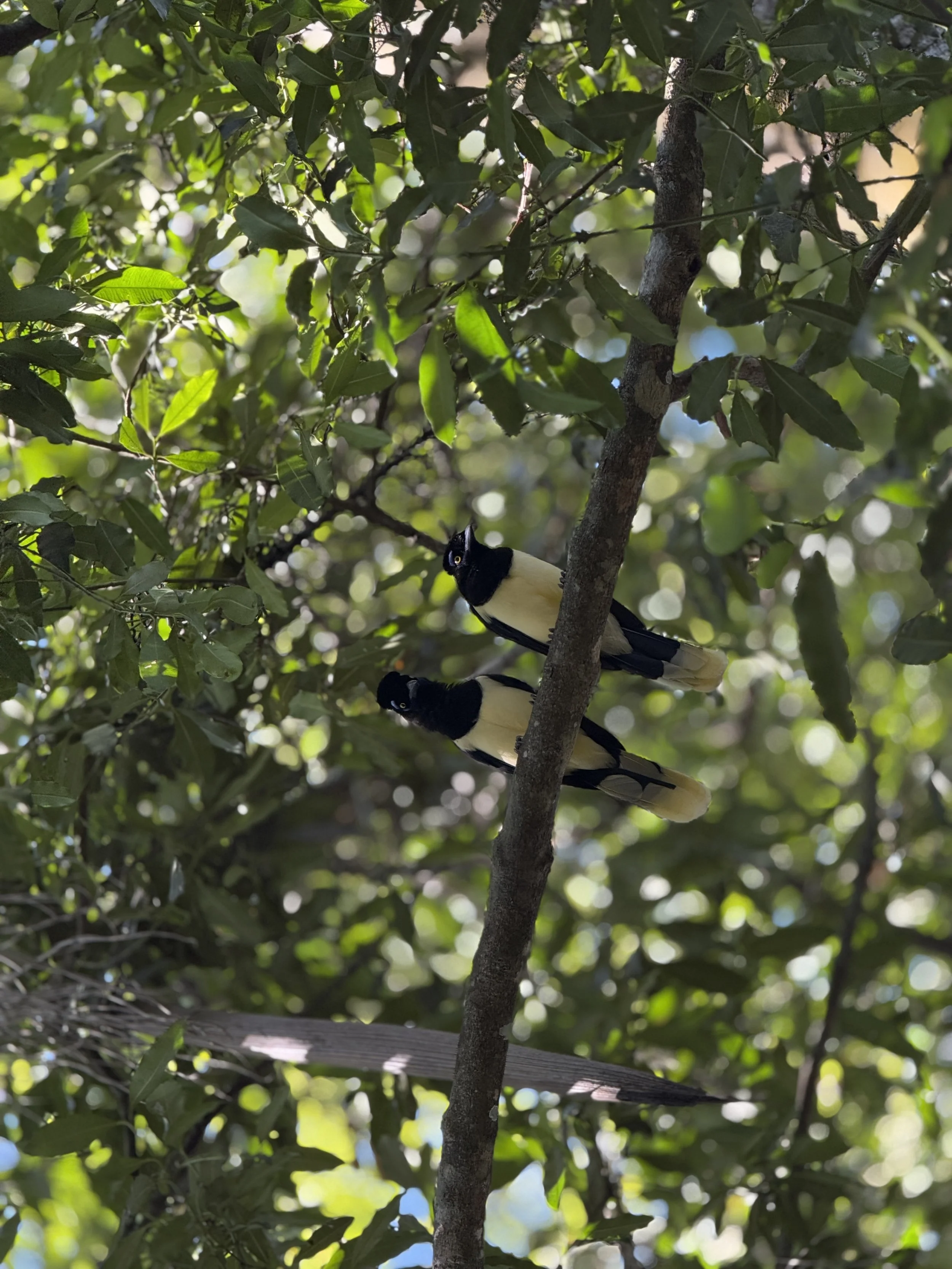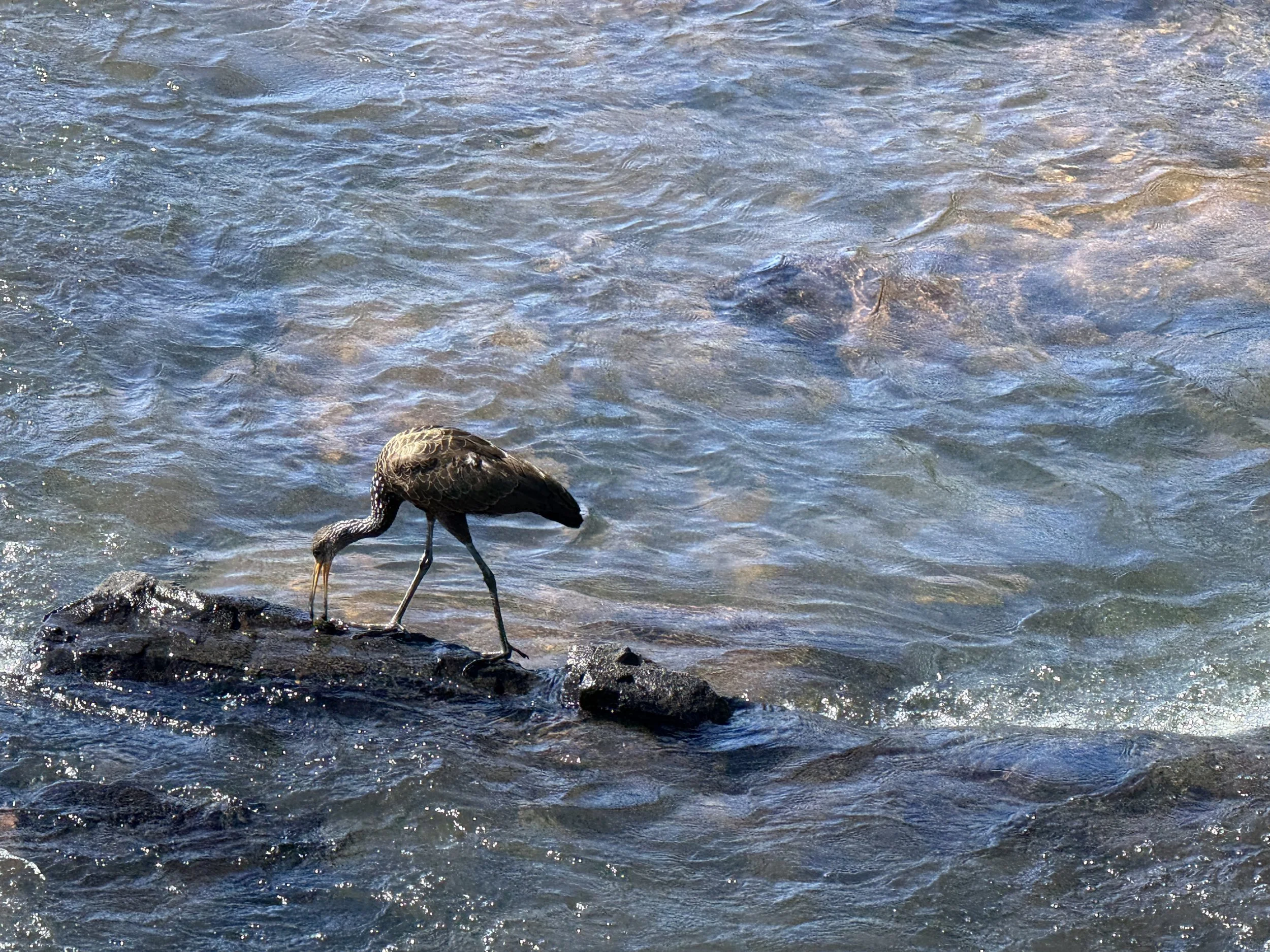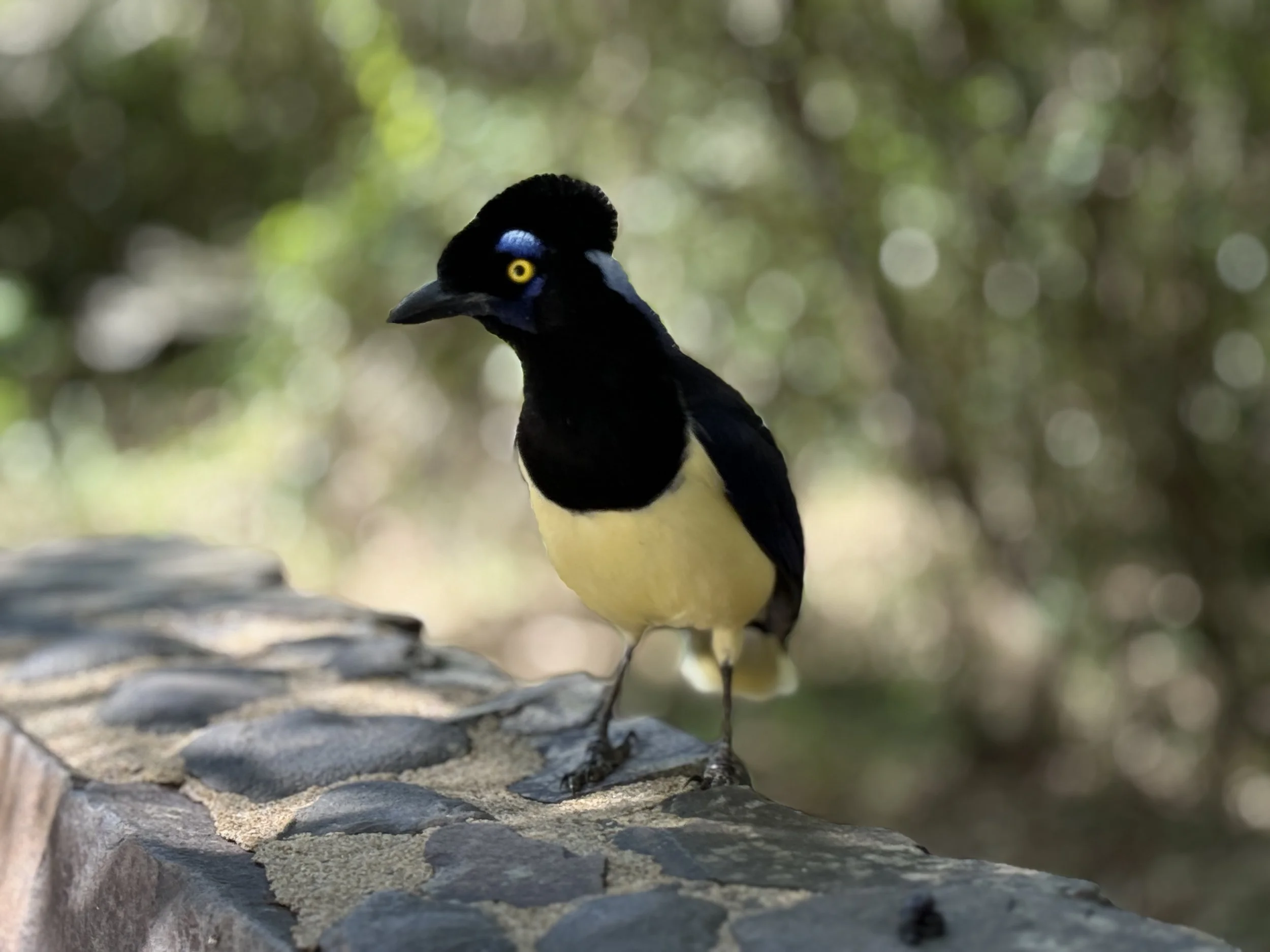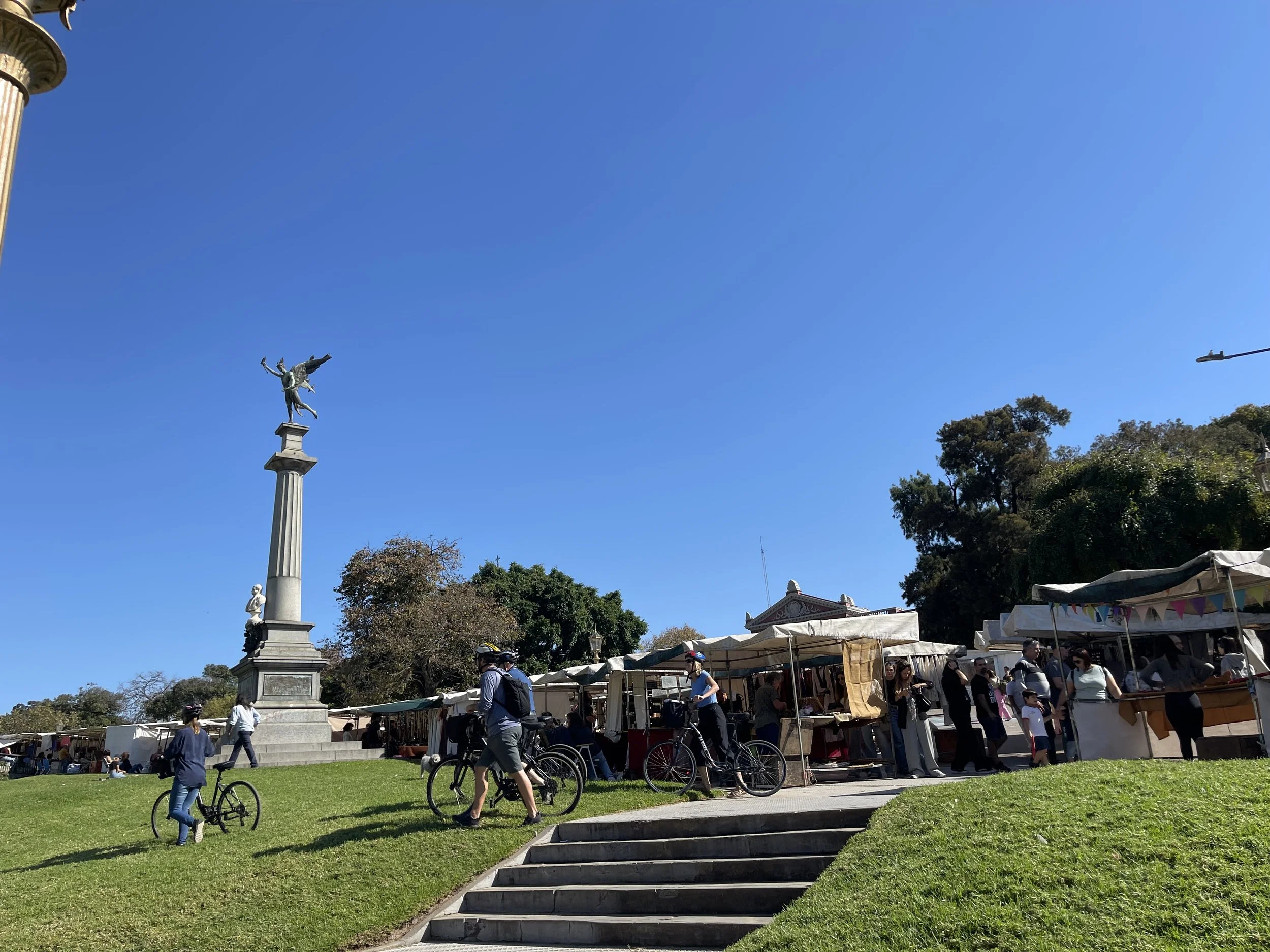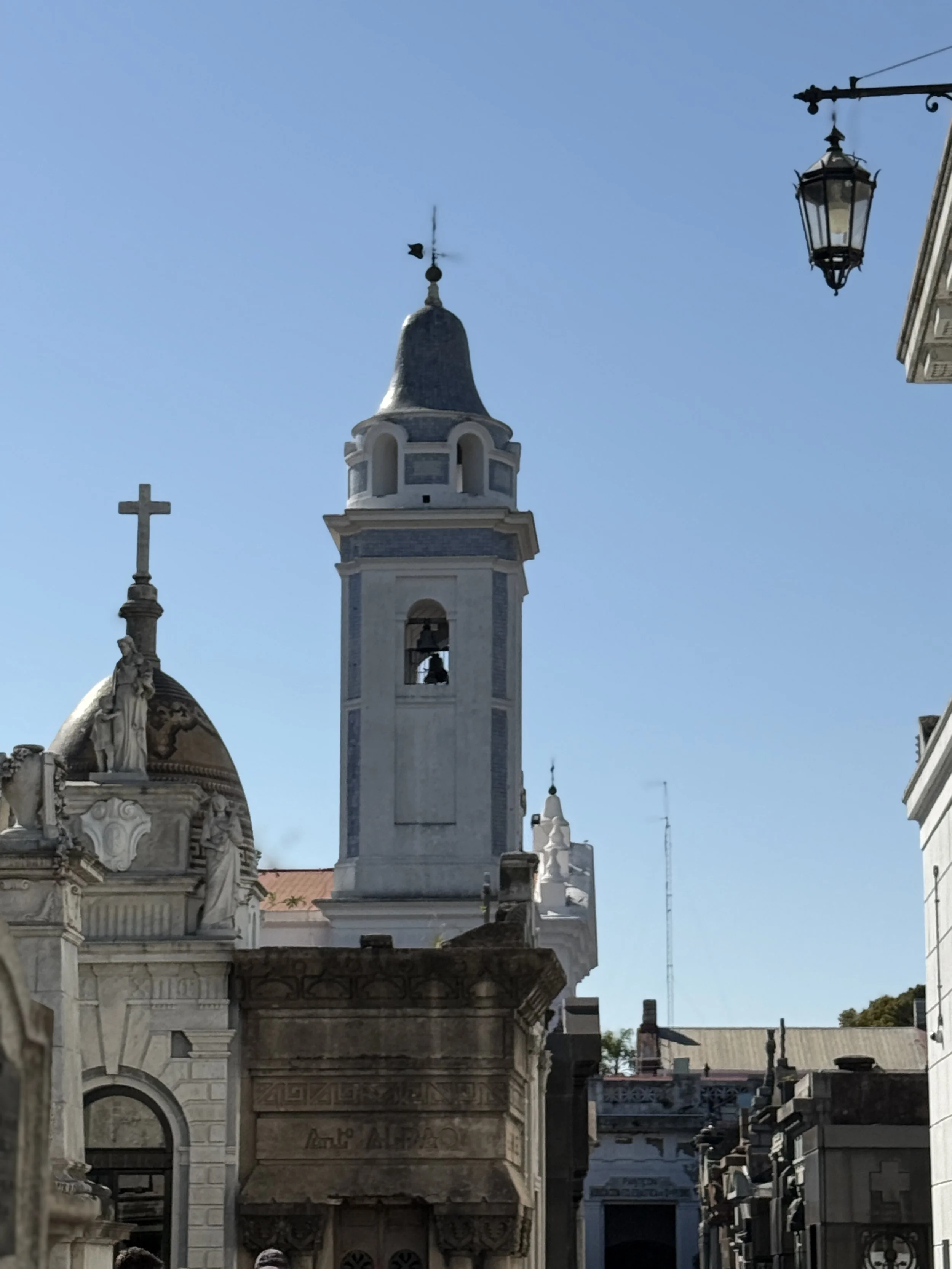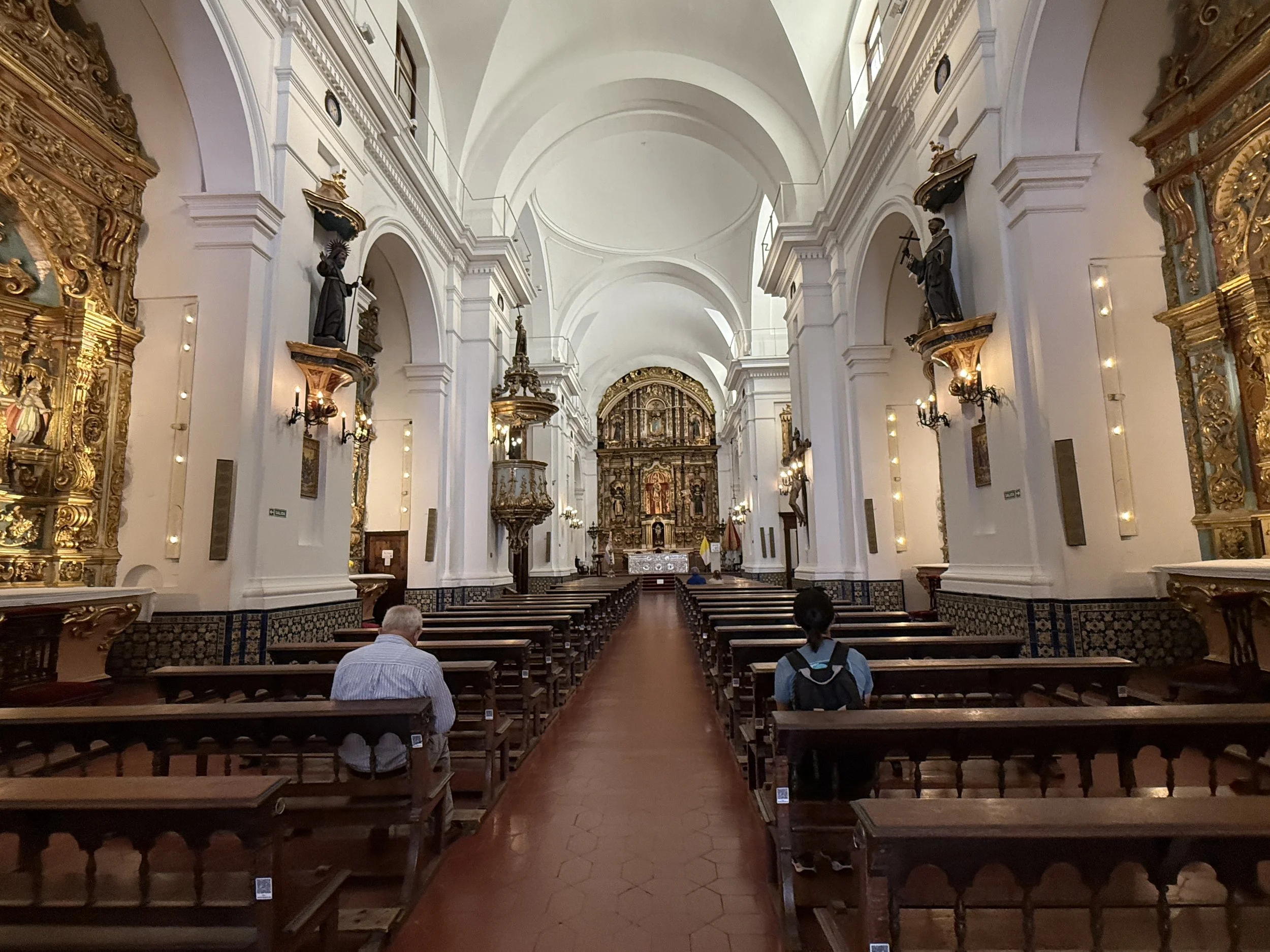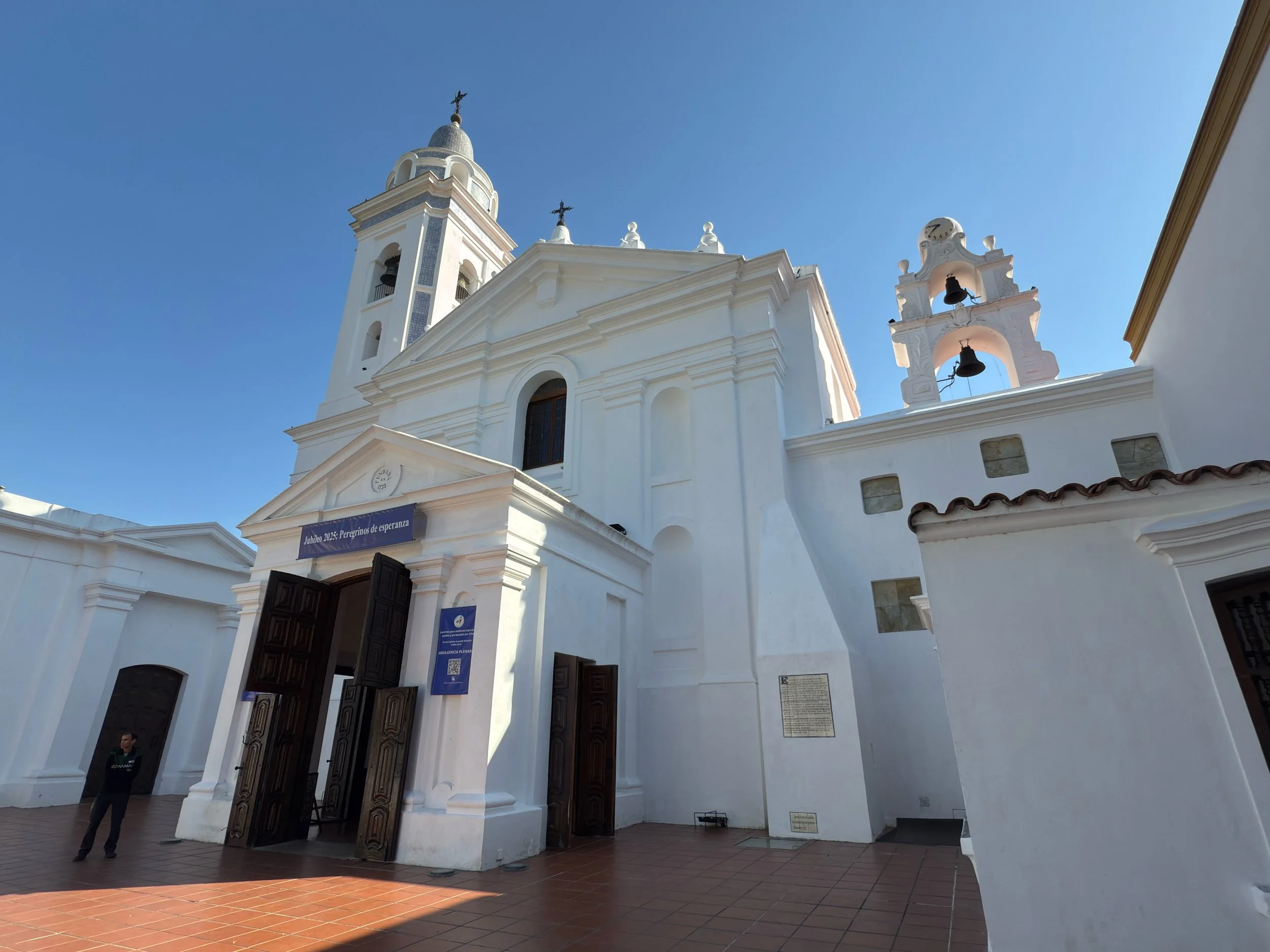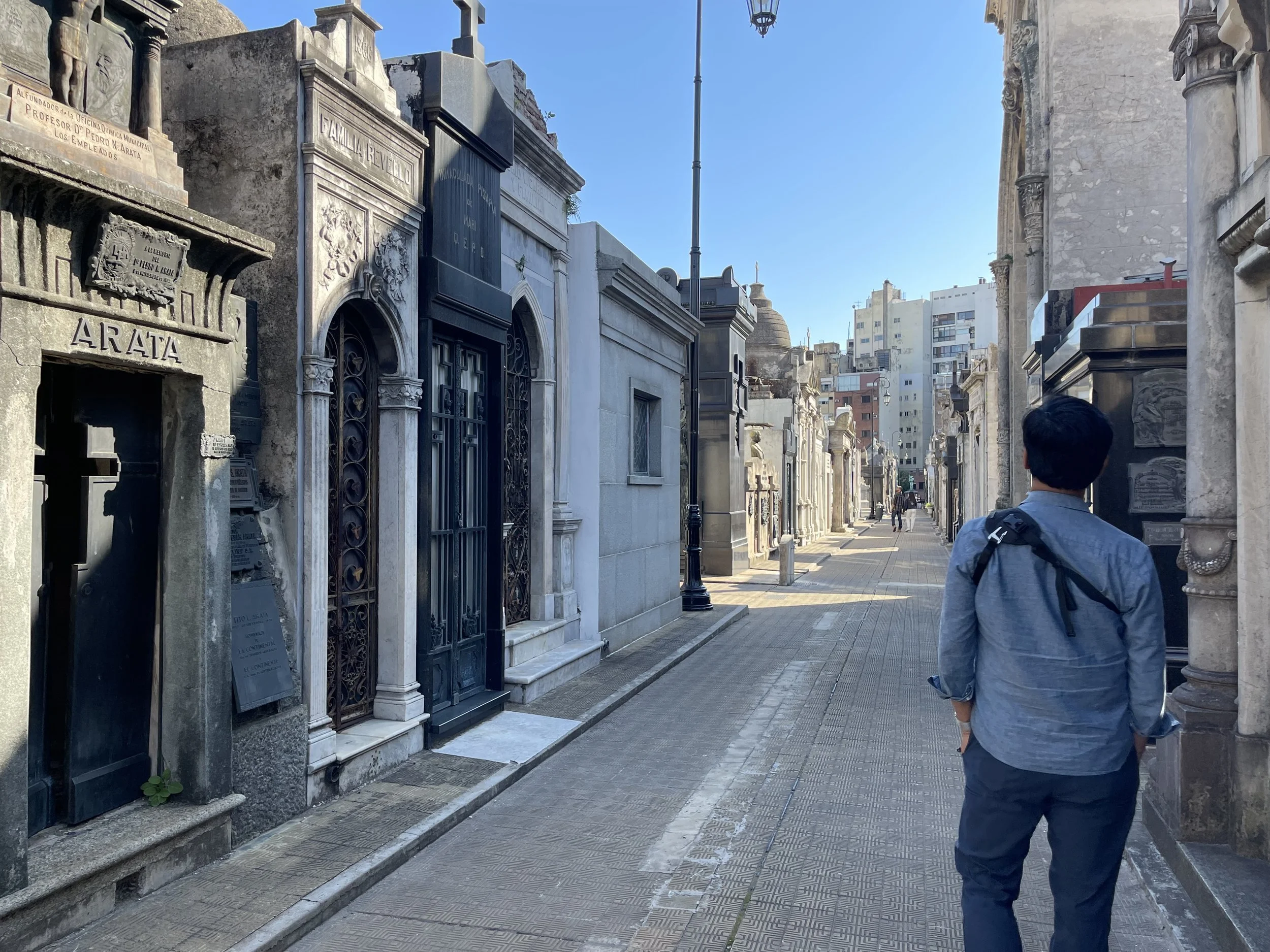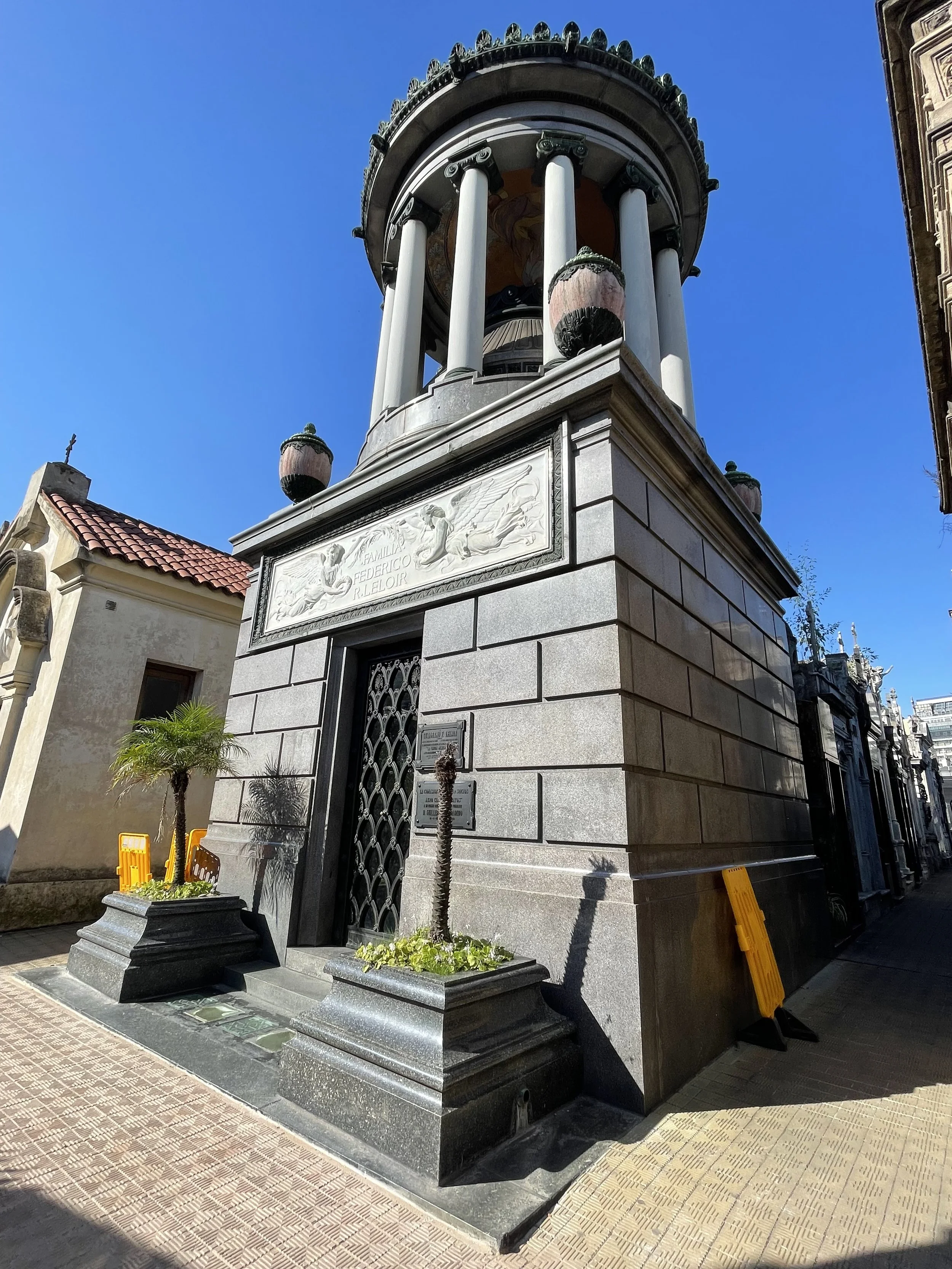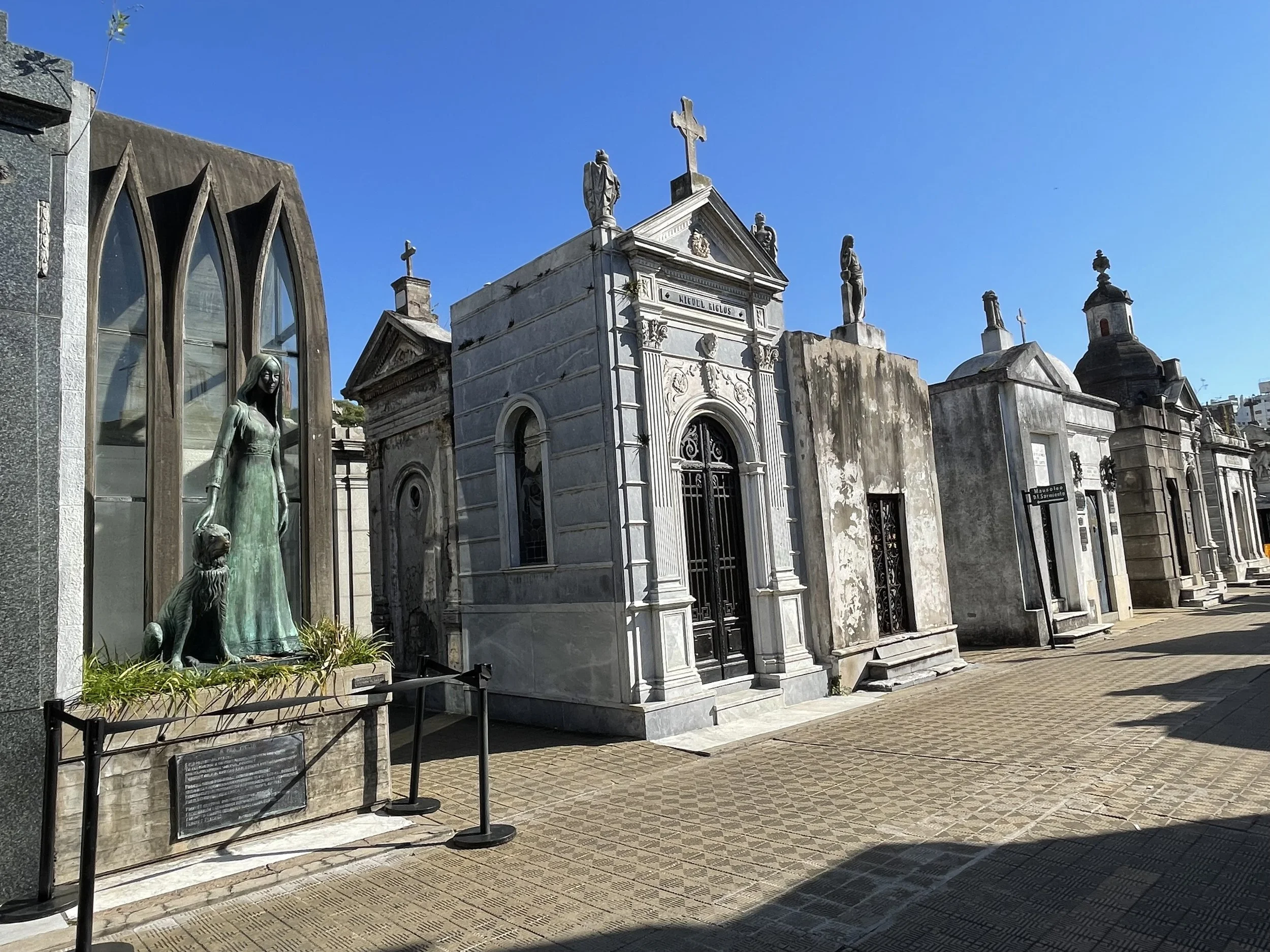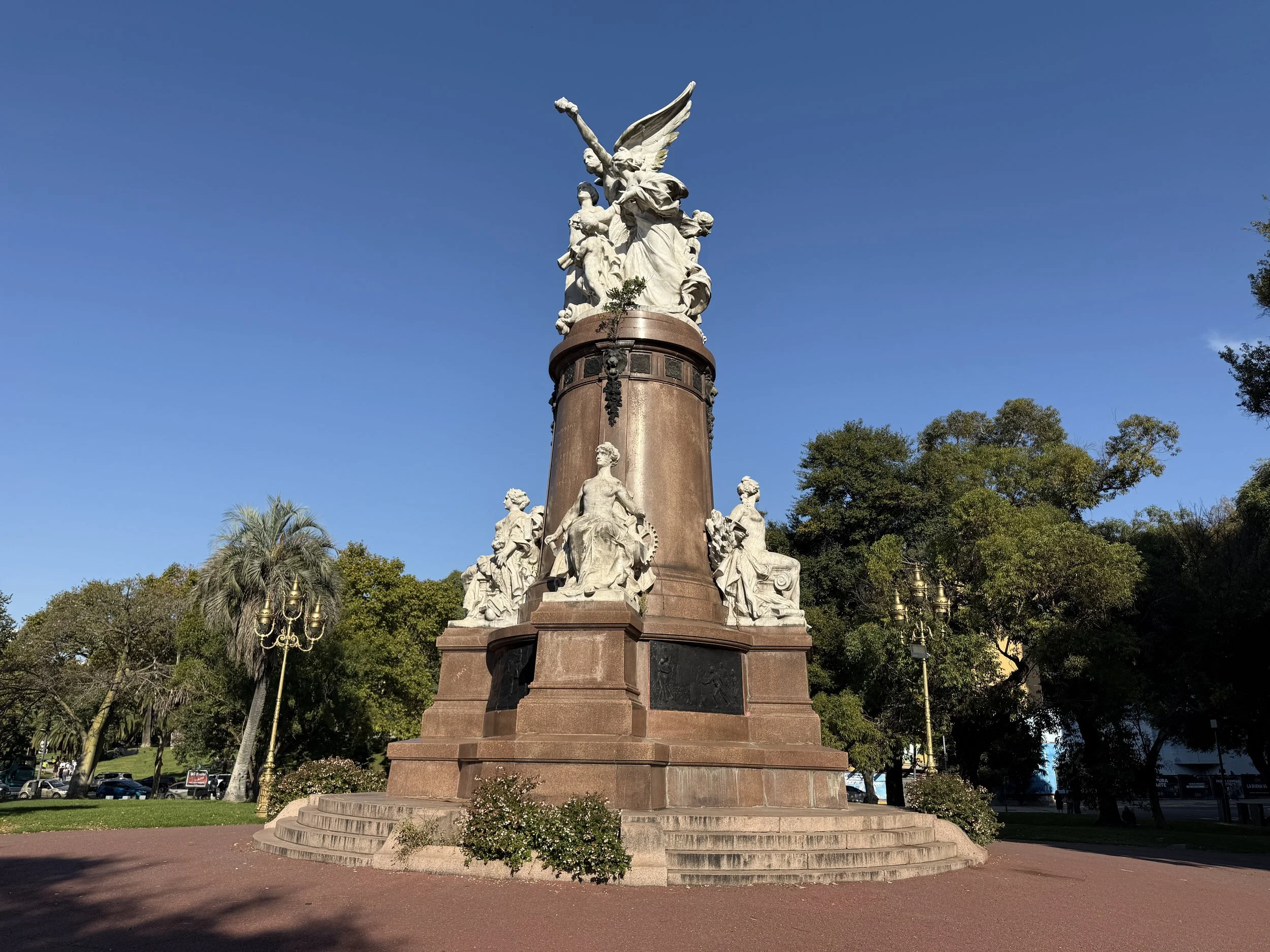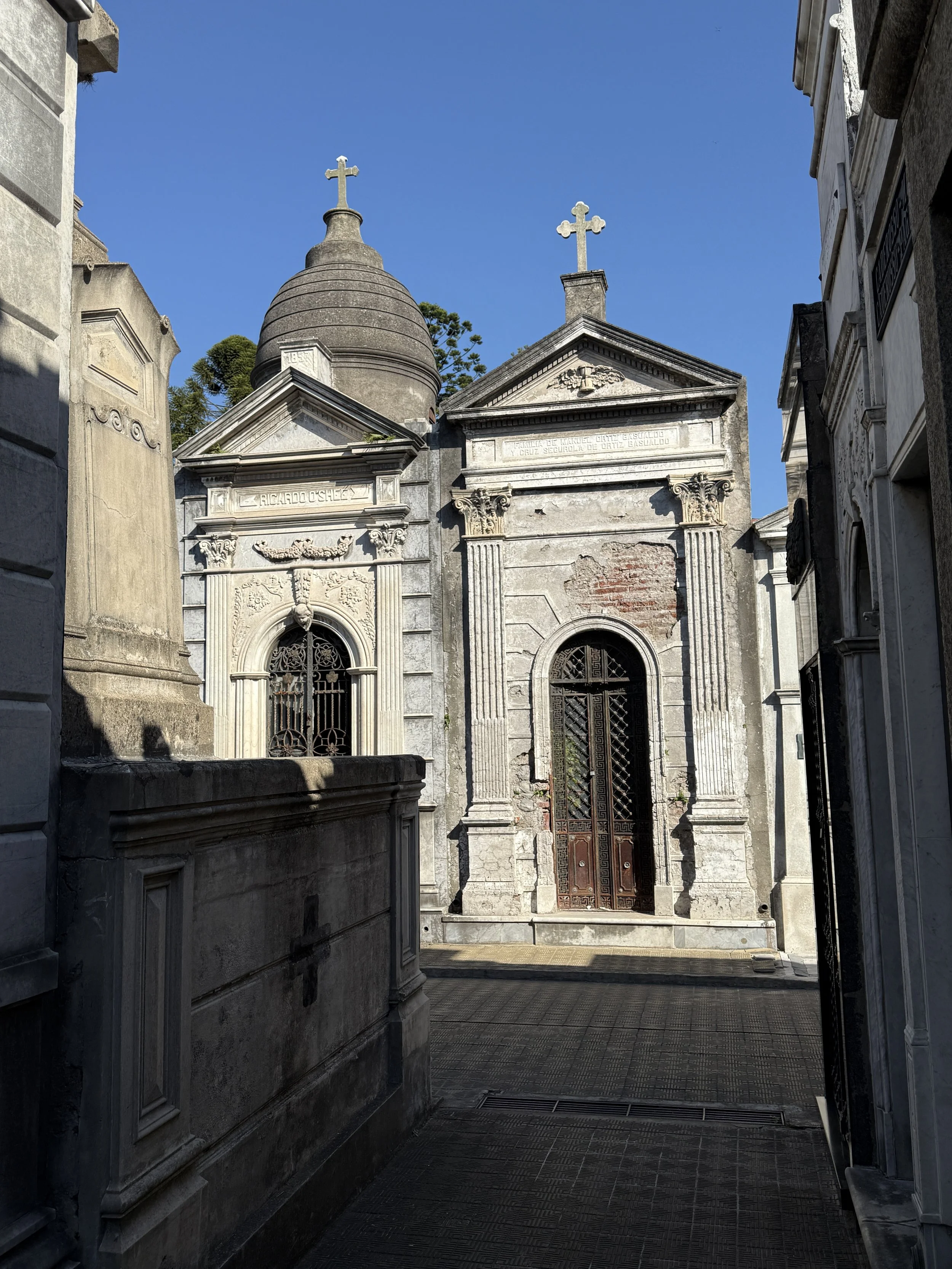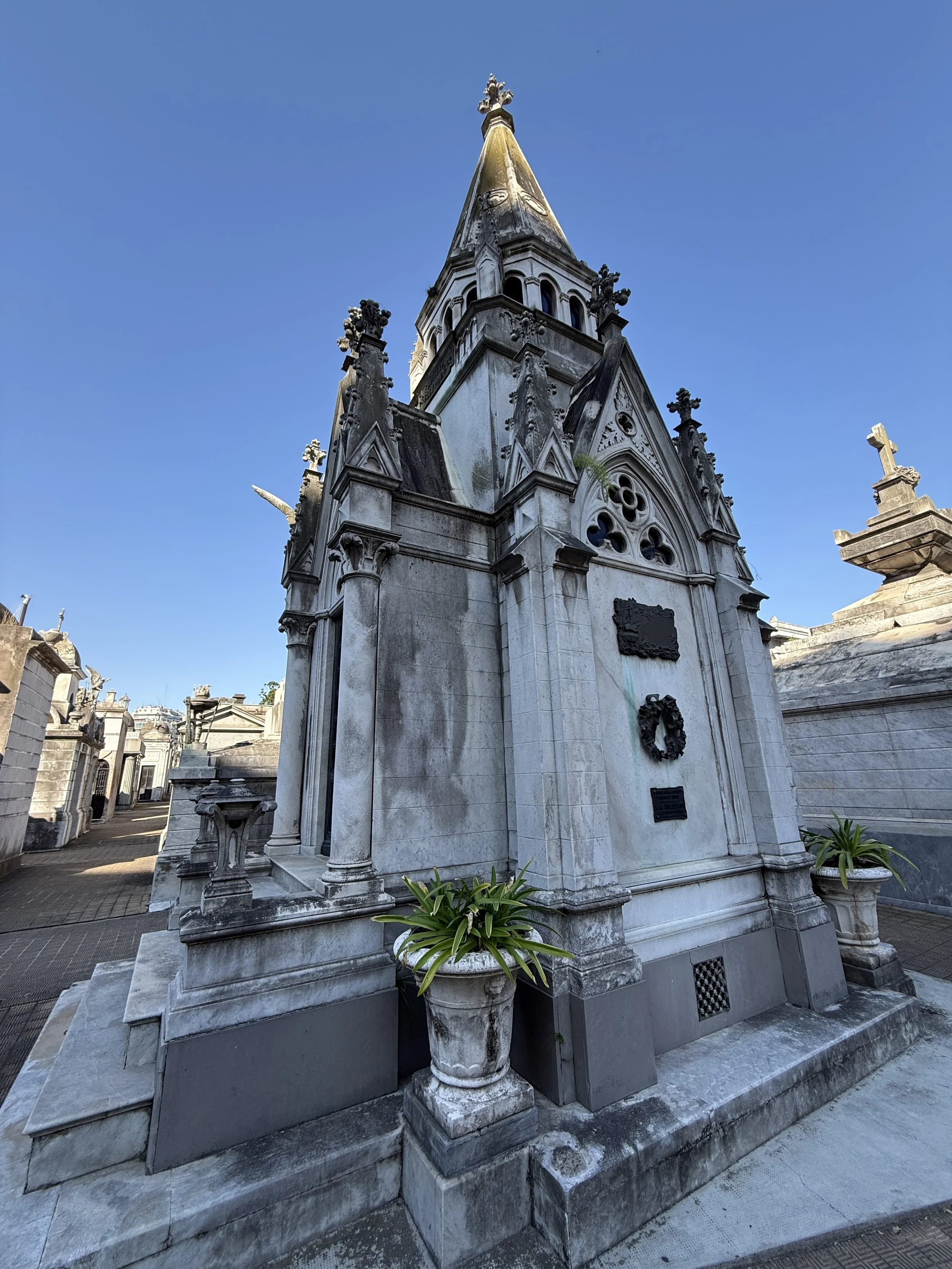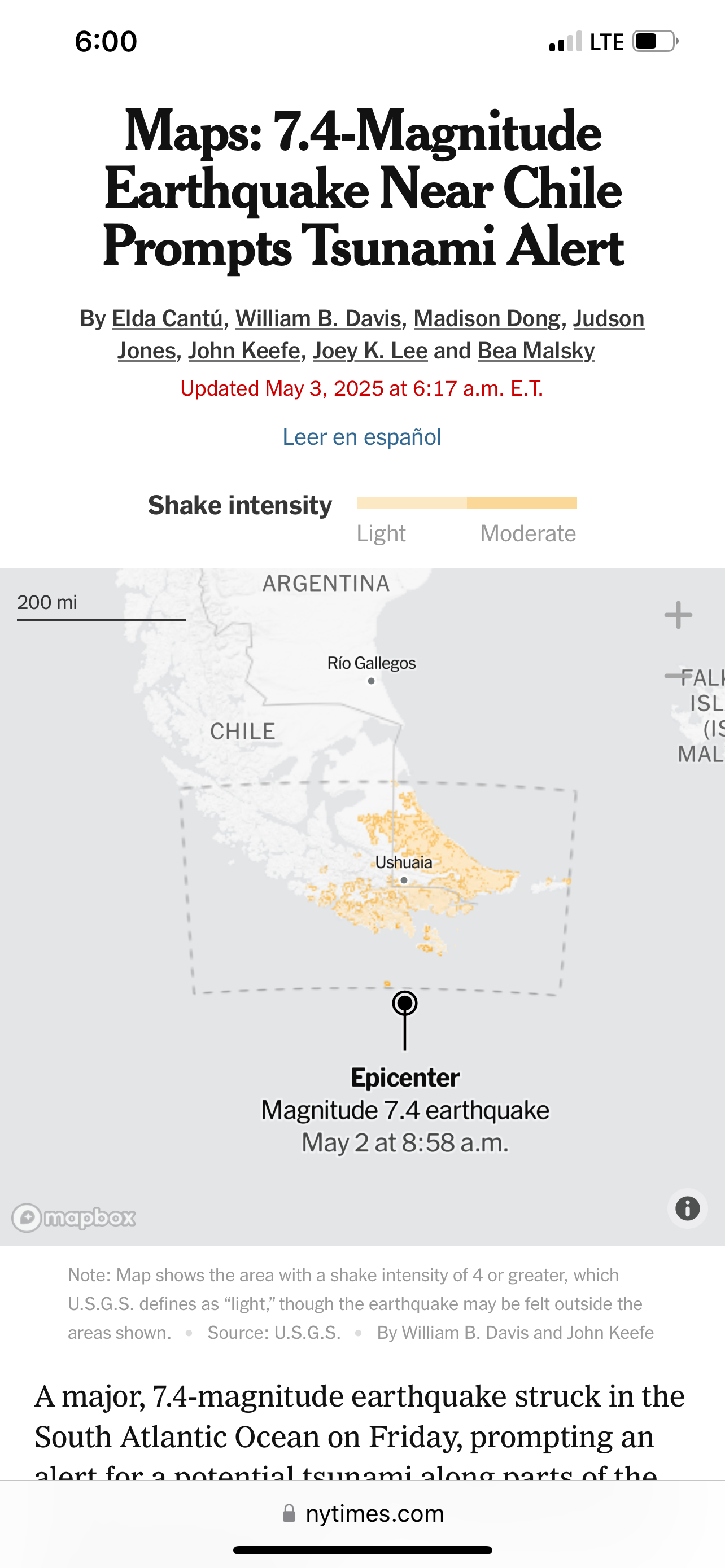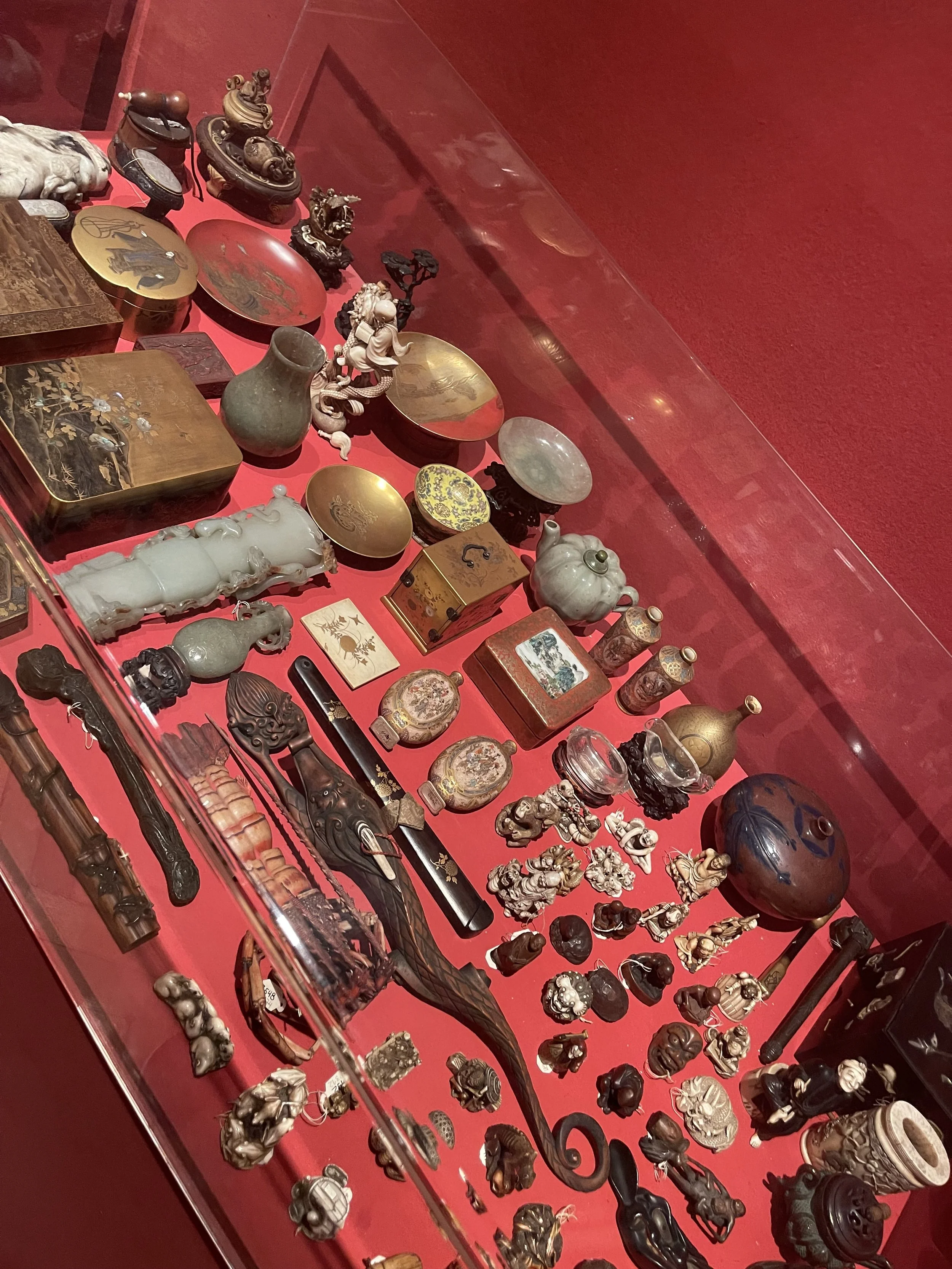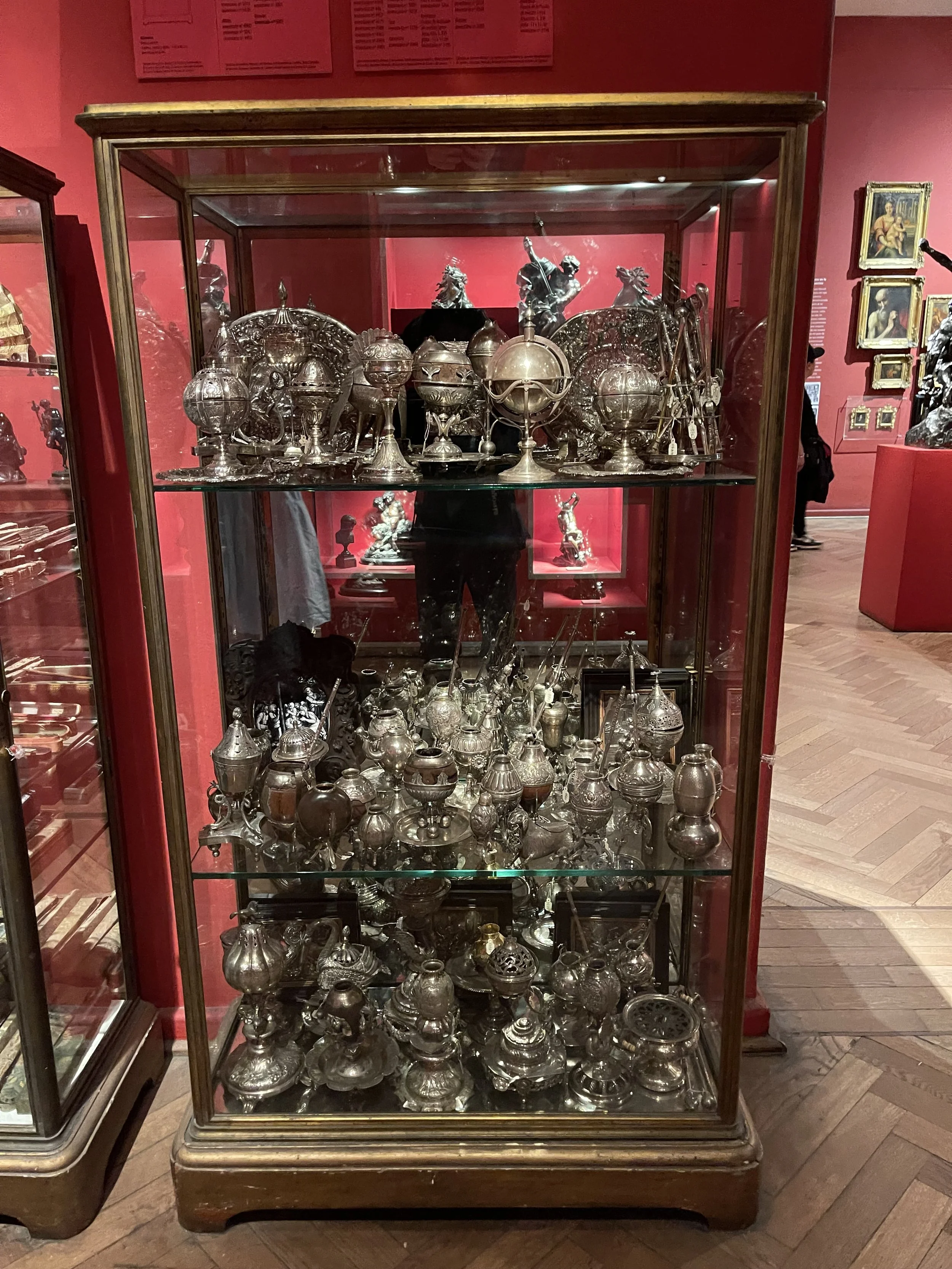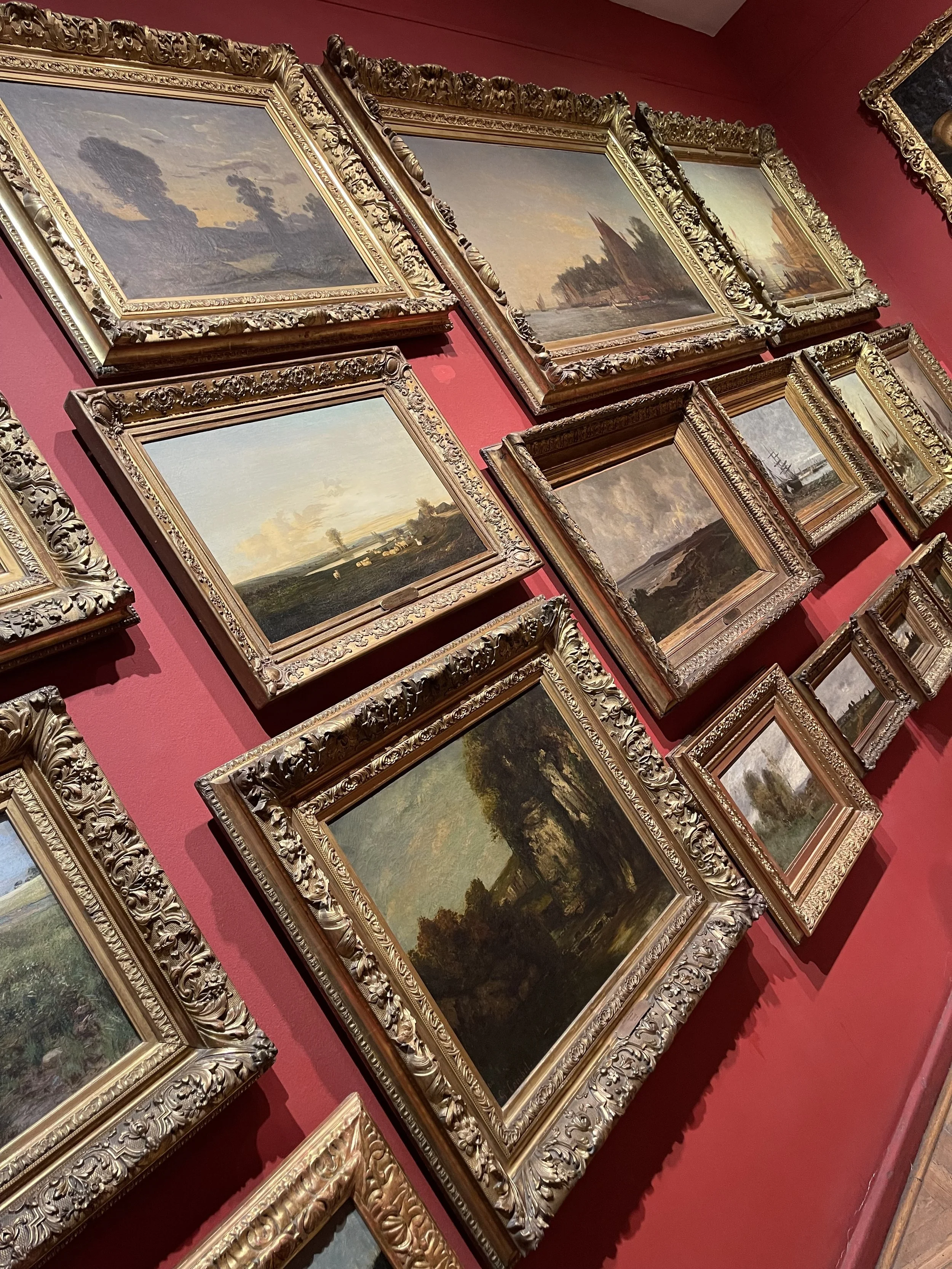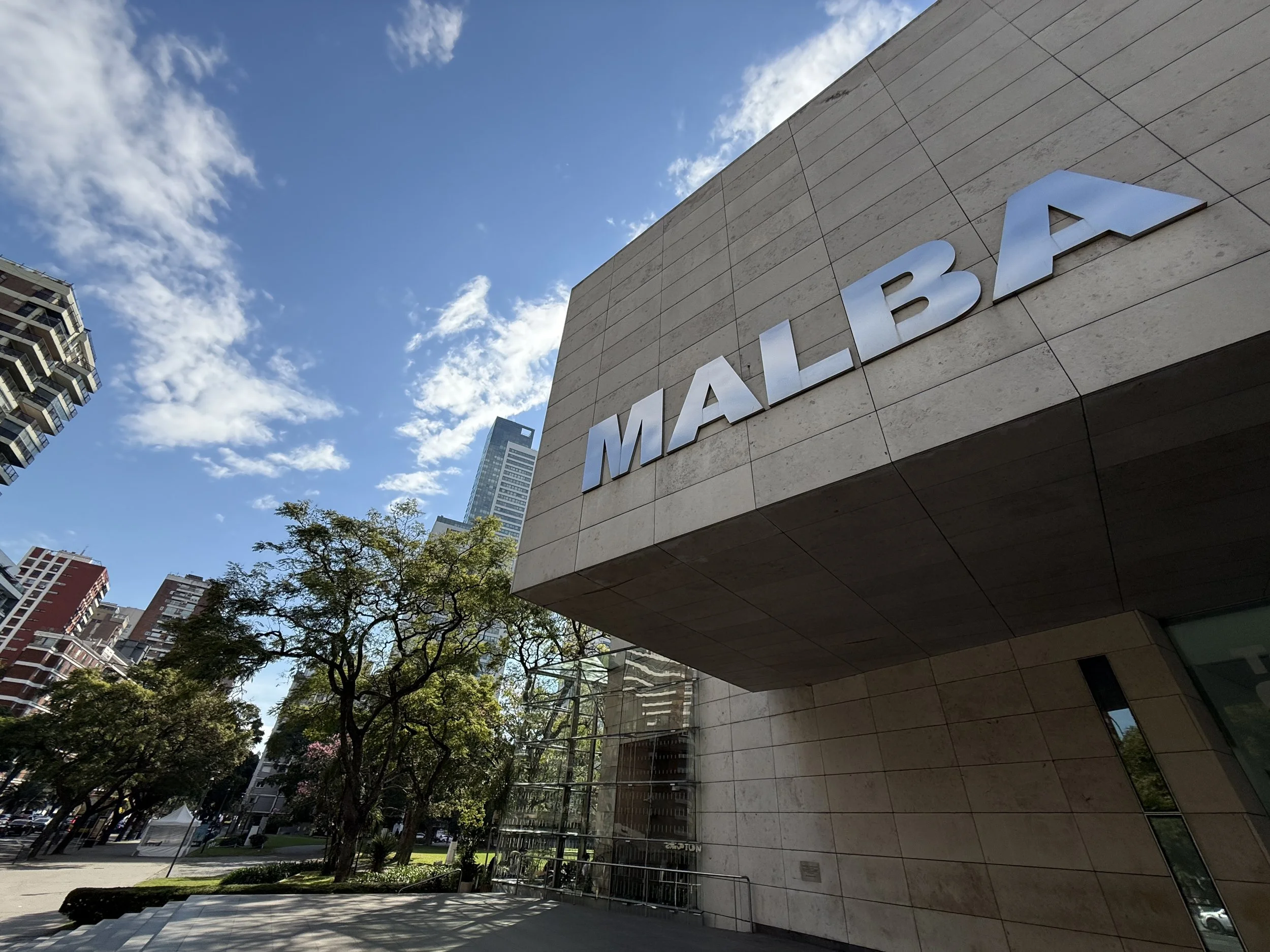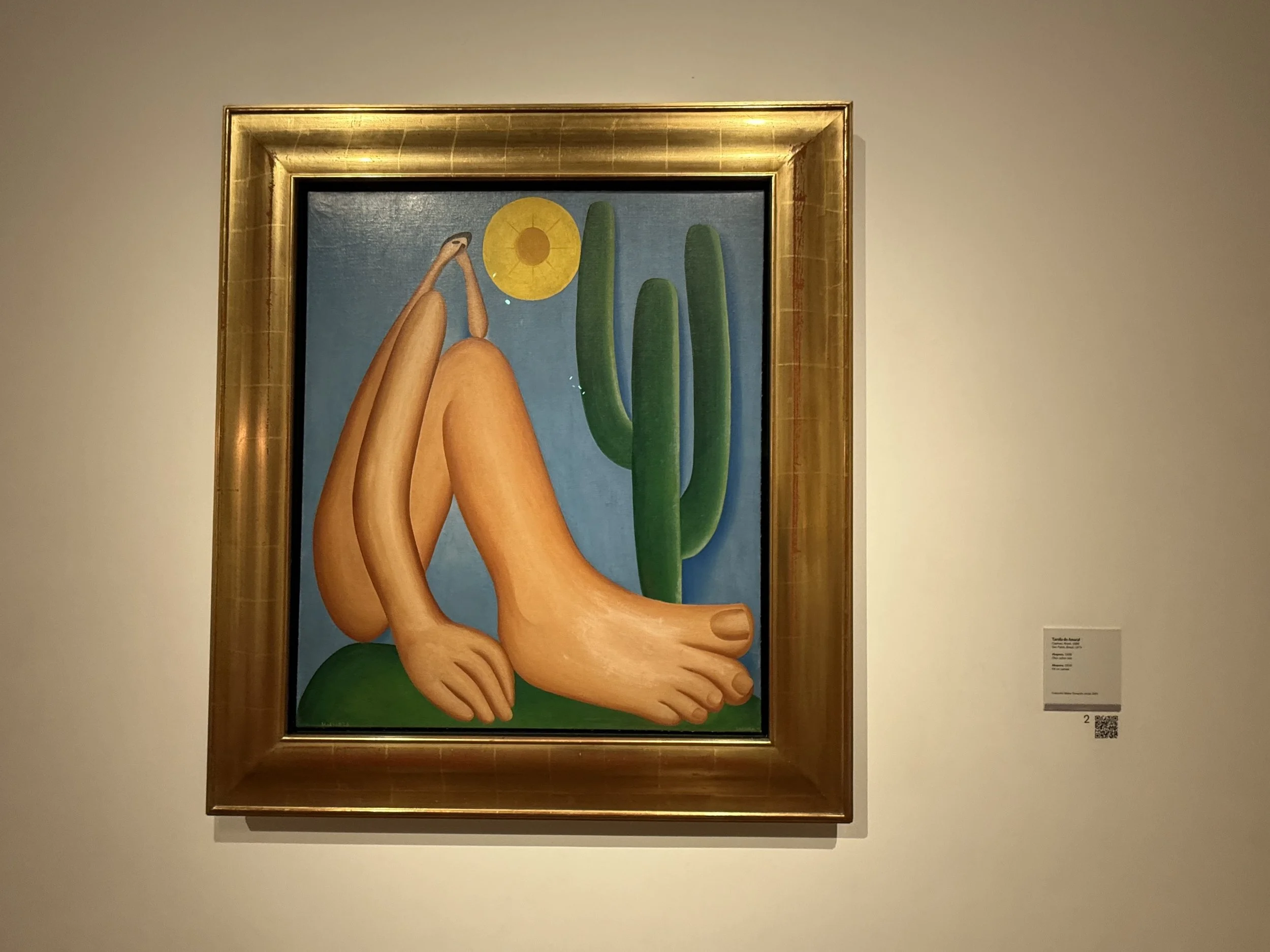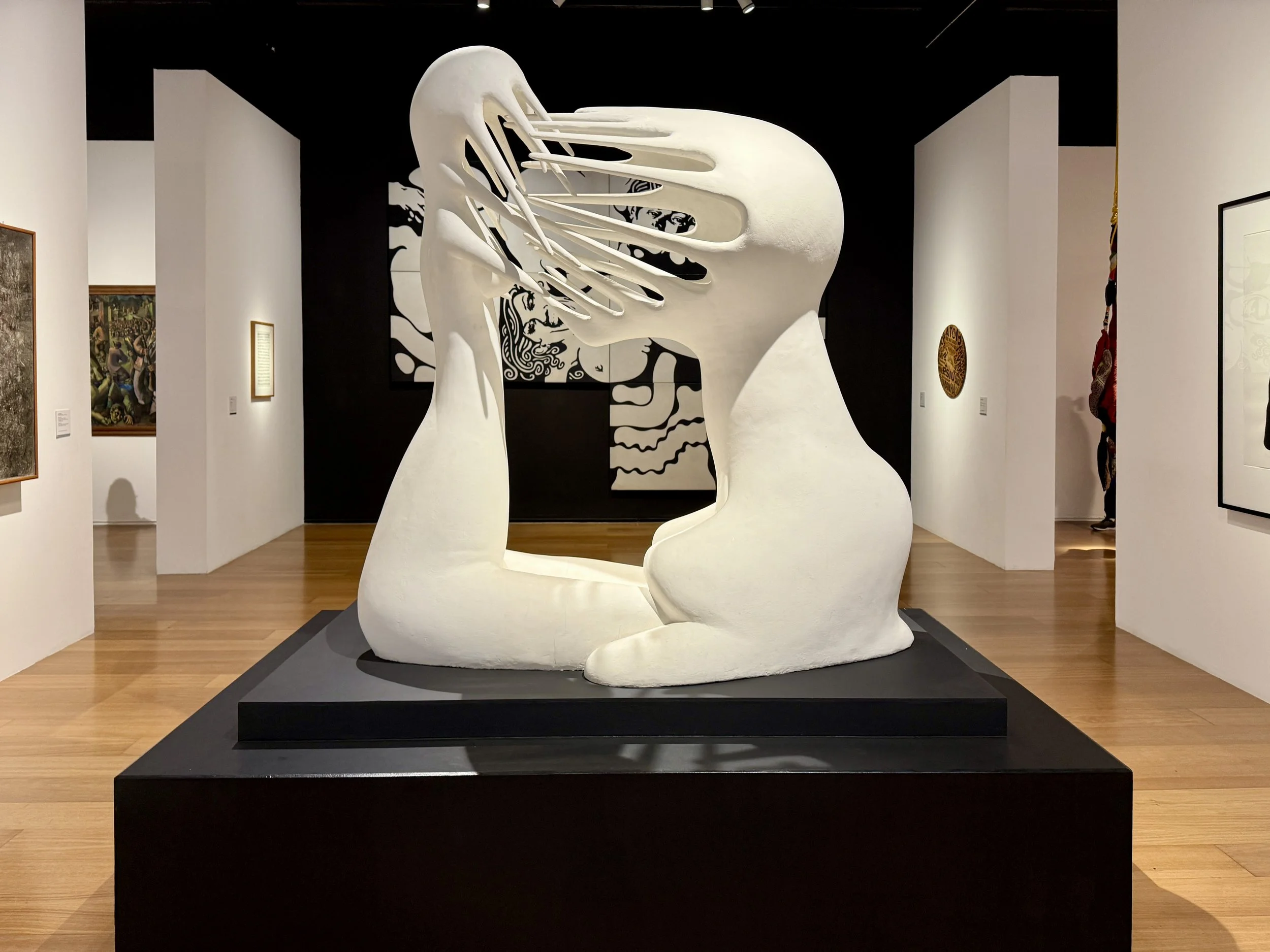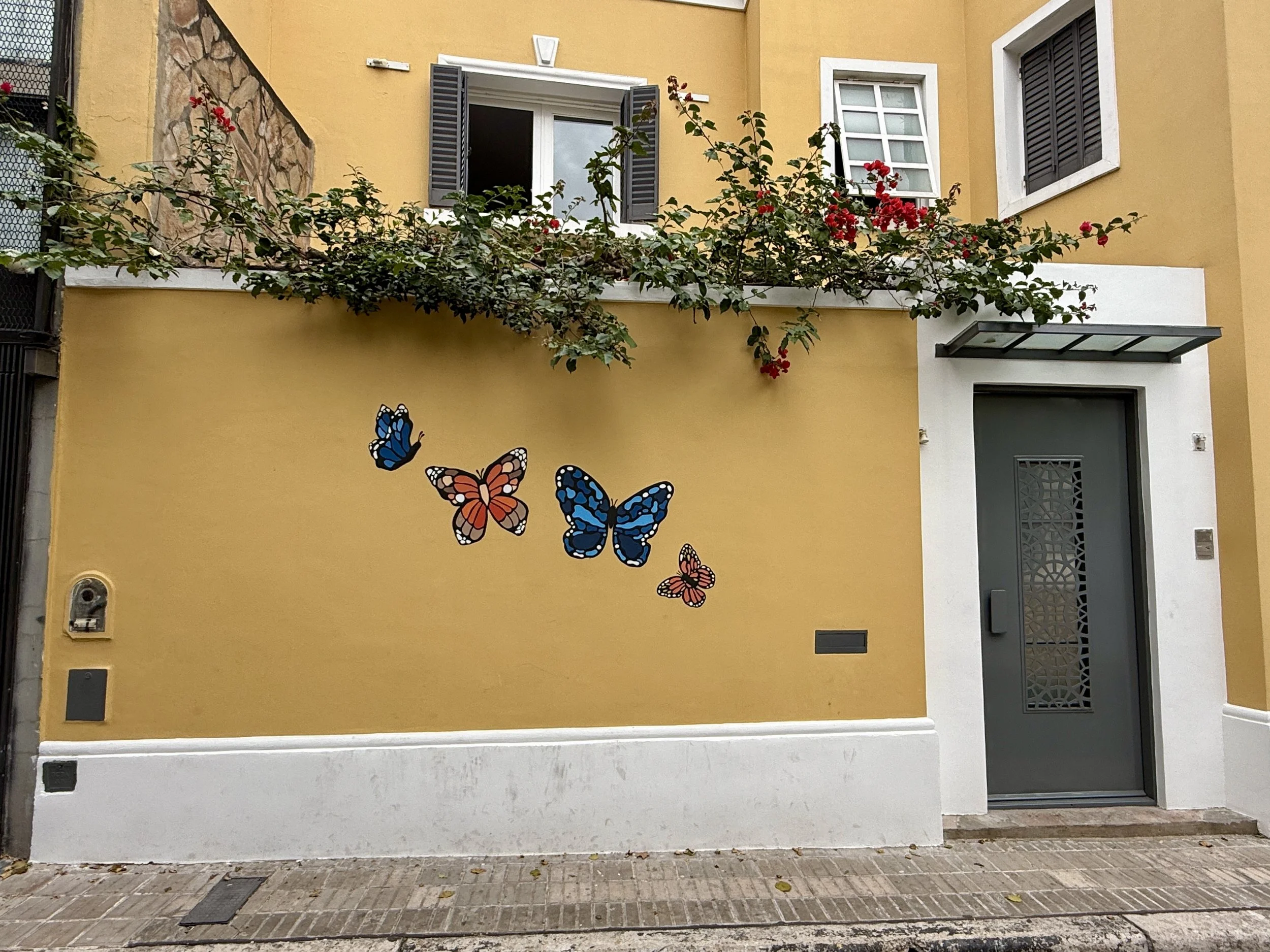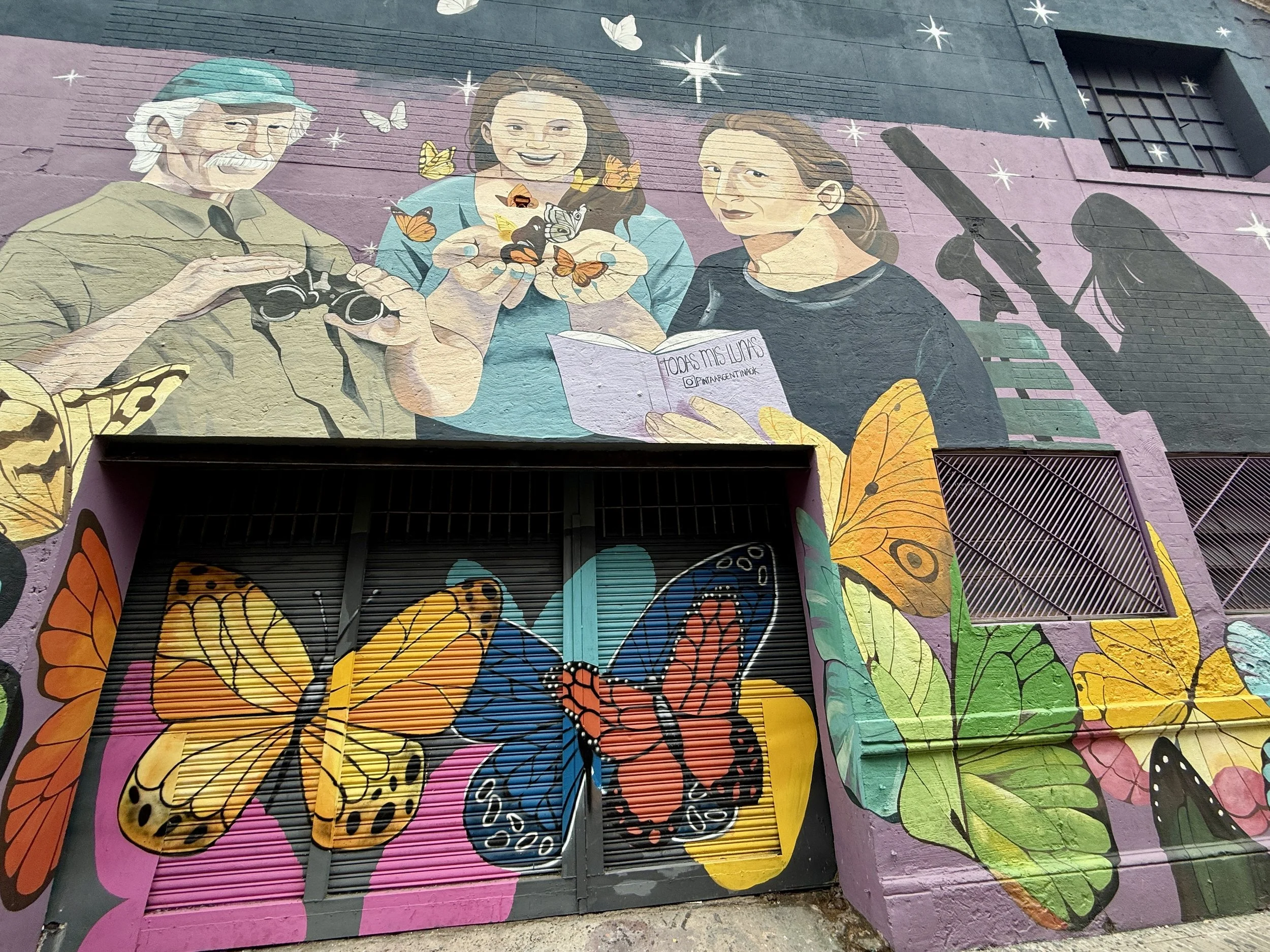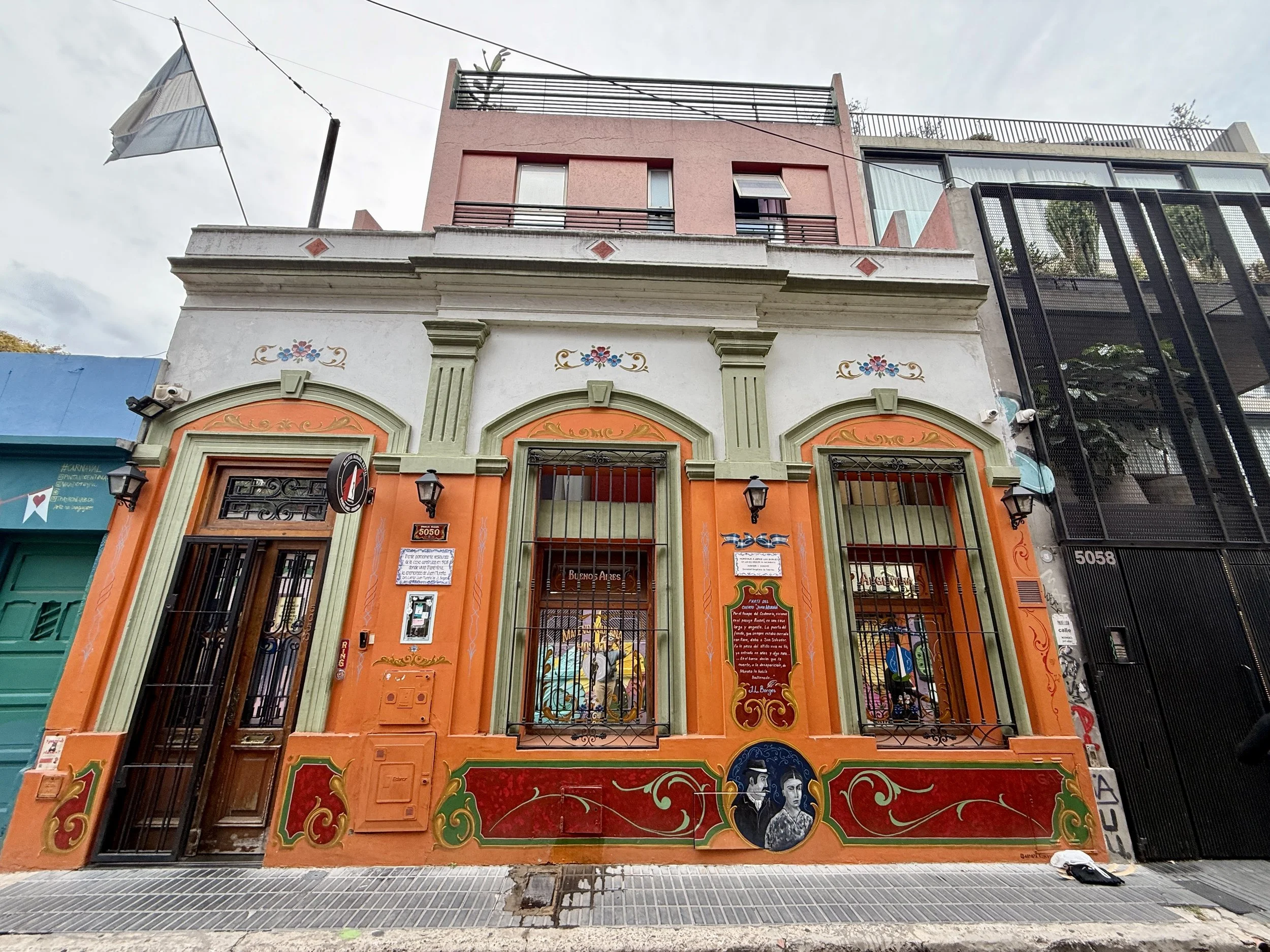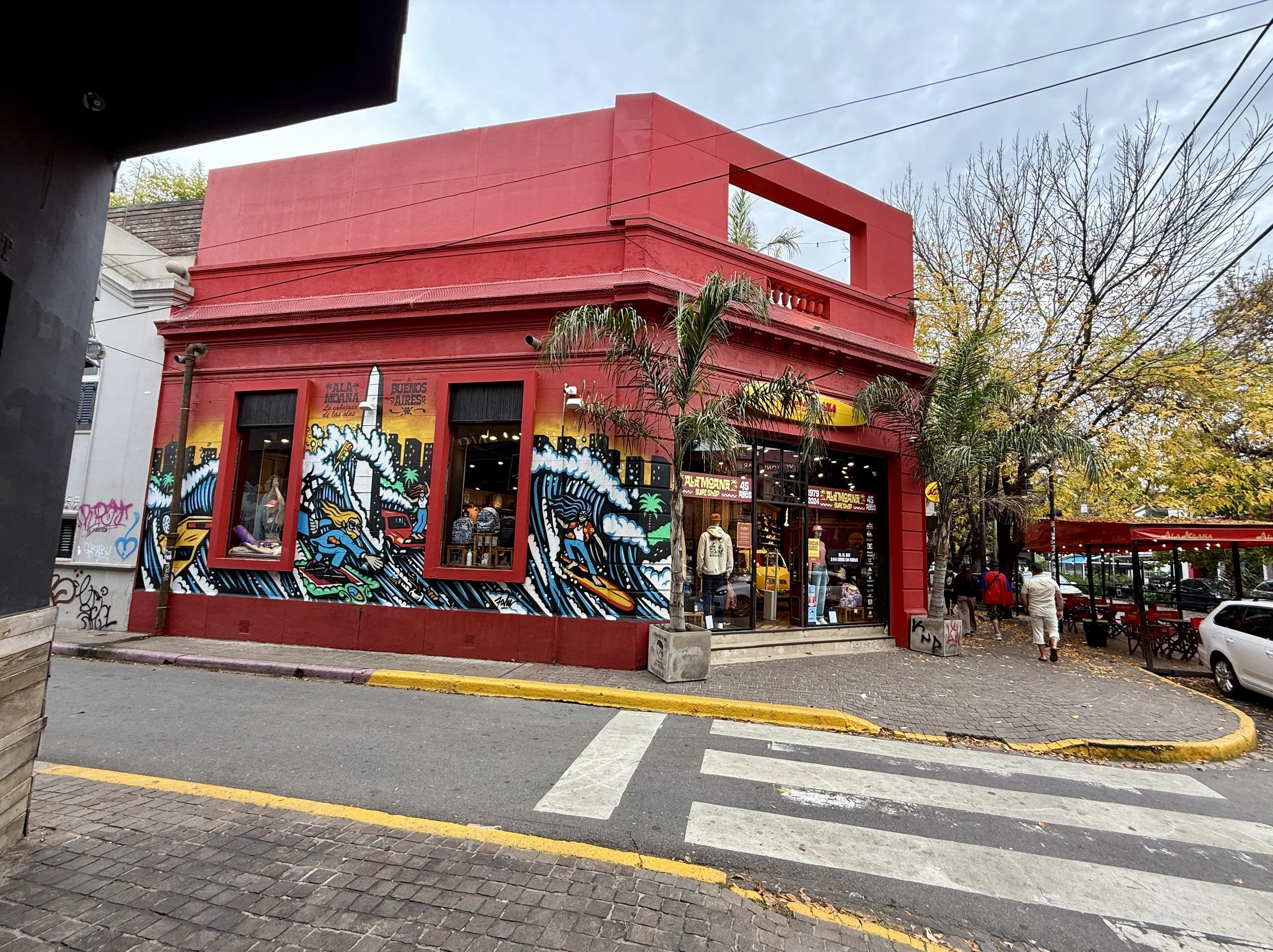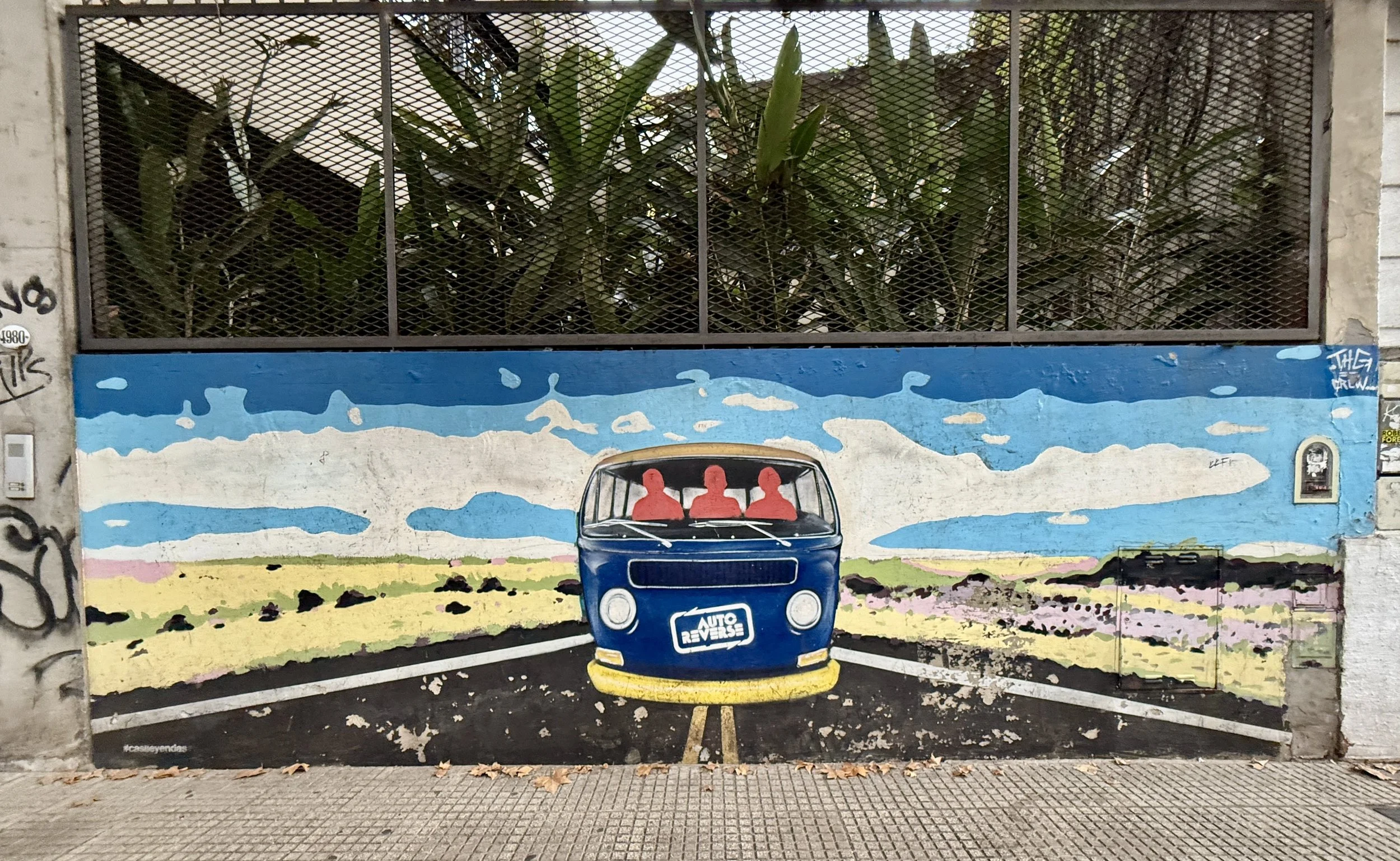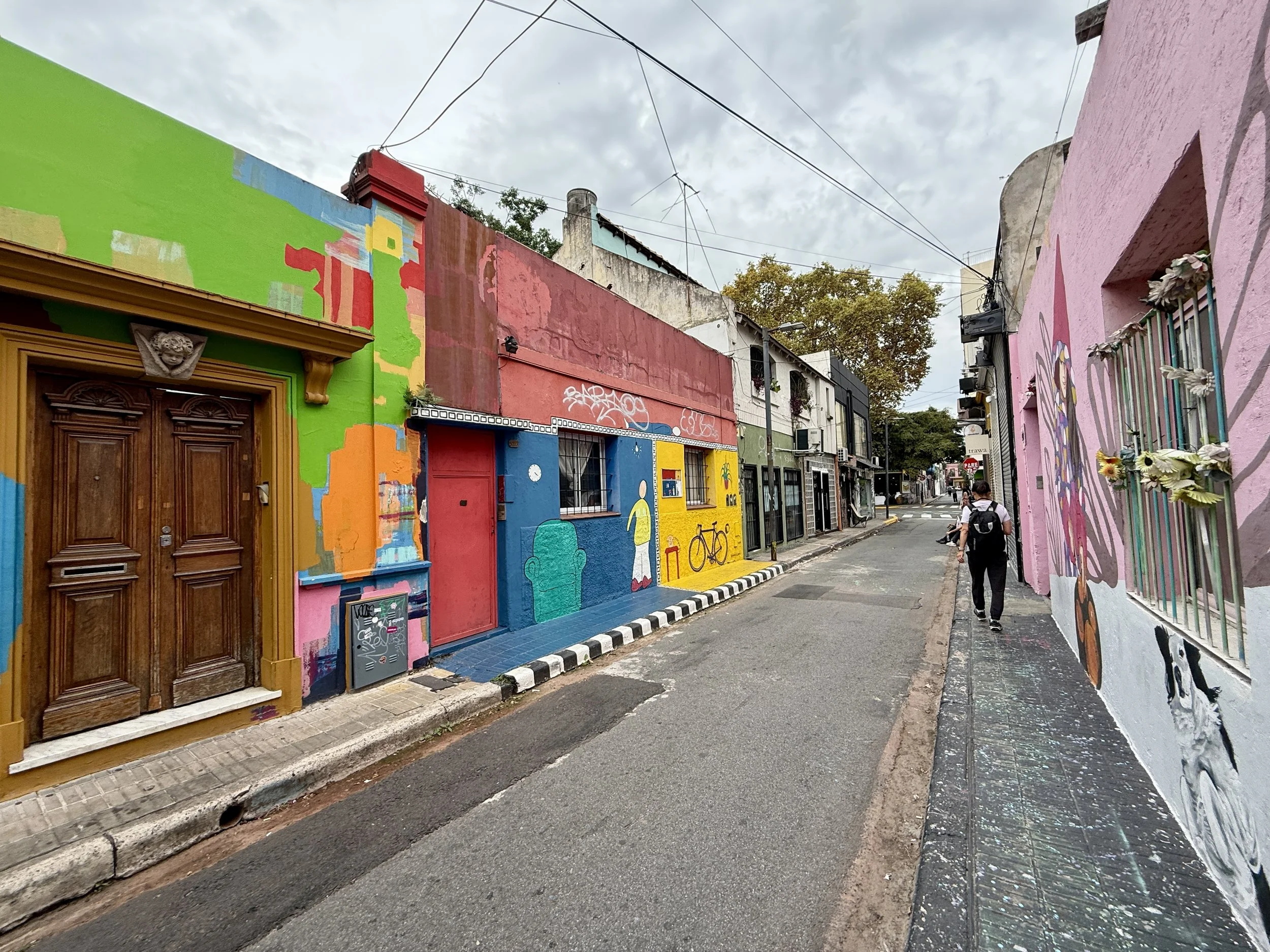Buenos Aires & Iguazú Falls, Argentina
Don’t Cry for me, Argentina…
After a long and uncomfortable flight from el fin del mundo, one of the first things N. did back in civilization is to get a haircut at a local barbershop where the resident dog was friendly and seemed to know I liked dogs — it was as if our own little Puki were greeting us.
***
Lots of walking today around the streets of Buenos Aires:
— We first walked to the Reserva Ecologica Costanera Sur, but the park was closed, although, weirdly, there was a large group of taekwondo students milling about outside the gates.
— We wandered south, all the way to the Fuentes Monumental Las Nereidas which, despite its obvious function as a fountain, had no water and was covered by ugly chainlink fence panels.
— We took a break at a coffee shop attached to a bike shop with a resident French bulldog who patrolled the area.
— We wandered around Mercado San Telmo, which was bustling with tourists and where I got stuck in the line to the ladies bathroom, making small talk with a group of ladies from Santiago. One of them kept asking me, “So how do you like Chile?” And her daughter had to keep reminding her we were not in Chile.
— We reached the main drag at Avenida 9 de Julio, where we stopped at the Obelisco, which looks very much like the Washington Monument’s cousin and where the flags were at half-mast in memory of Pope Francis’ death.
— And everywhere, Monsieur Messy was doing his best for the Argentinian economy.
***
It was another beautiful cloudless day, the sky the color of Argentinian blue. We headed to the Teatro Colon for a guided tour.
The theater was designed by European architects, built with European materials, and followed European styles. One has to get ideas from somewhere. According to the guide, the only things Argentinian were the large chandeliers in the foyers and halls, although the one in the main auditorium was European as well.
Besides the beauty of the theater, the most interesting fact was that the different classes of seats — boxes, ground and upper levels — had different entrances to the theater (it takes one whole city block), as if the seats themselves don’t already denote different classes. And in what I can only imagine was somebody’s idea of a joke, the standing room “seats” in the nosebleeds were called “Paraiso”. It seems the meek will indeed inherit the earth.
We went back to the hotel to get some rest from today (and yesterday!), but while N. slept, I could not take a nap even though it’s one of my specialties, so I read instead — almost finished with Lincoln in the Bardo.
We finally had steak in Argentina that didn’t taste of, well, nothing — it wasn’t great but at least it was seasoned and cooked to medium rare, and the grilled veg, mashed pumpkin, and rustic pots were not messed with.
***
While boarding the plane for Iguazu Falls, a man told the flight attendant that the older relative with him was 84 years old and that this was her first flight. A little girl across the aisle by the window screamed excitedly when the plane took off. All passengers clapped upon landing.
We were headed out to our favorite type of destination — national parks.
Given that our hotel had wanted to charge us ARG$50,000 for a ride to the park, we had been resigned to the idea of taking a local bus — ARG$10,000 per person — and making it an adventure. On the way to the bus terminal, on a whim, we asked a man sitting in a chair in front of a sign that said “Taxi” how much for a ride to the park; he responded, “ARG$20,000.” Well, anyone can do that kind of math, so cursing the hotel, we hopped on his car, but not before I had taken a picture of what I took to be his taxi registration number from his rear windshield. (How exactly this was supposed to be insurance against being kidnapped, I’m not sure.)
But the driver was quiet and kind, and it took a few questions from me in Spanish to get him to talk about the town. He said the area was always full of tourists because even in the austral winter, tourists from the northern hemisphere come during their summer vacations. The road we were taking — Ruta 101 — was used for nothing but going to the park and the airport; he also said that many animals were run over on this road, especially at night, since large cats like pumas and jaguars were nocturnal animals. So it wasn’t just the stray dogs in the town fighting everyday for survival — animals in the jungle in a protected national park were under the same predicament.
At Parque Nacional Iguazu, which besides the many different species of fauna and flora, was also supporting the Argentinian city of Puerto Iguazu, our patience was tested before we even passed through the entrance gates.
Tickets per person for international tourists were ARG$45,000, payable with cash or card, except if that card was a Visa, which, the person behind the ticket booth said, was not being accepted today because of some glitch in the system. So we found ourselves in a surreal sitcom episode, whereby
(1) we were directed to a snack shop next to the ticket booth;
(2) gave them dollars to exchange for snacks we didn’t want — all packaged food in South American comes with octagonal black warnings about “too much total fat,” “too much sodium”, “too many calories,” — of which we were required to buy a minimum ARG$10,000;
(3) had our US bill rejected because it had a little black pen mark — again, common practice in SA where all dollar bills must be pristine, and whose exchange rate is more advantageous the larger the denomination. Who exactly was collecting all these benjamins and what they were doing with them was a mystery to us;
(4) found another bill that passed muster;
(5) got our change in local currency, more than half of which we received in many ARG$1,000 bills (equivalent of US$0.70);
(6) took a thick wad of this “useless little papers”, as that lady in El Chalten had called them, back to the ticket booth;
(7) only then we paid our entrance fee.
With this fresh feeling of having been victims of a racket, we entered the park gates.
We took the little train from the Cataratas Station to the Estacion Garganta del Diablo, just following the massive crowds. It was another three-quarter mile walk on metal walkways built over a bit of forest, over swamps, and finally over large swaths of a river that was no deeper that two or three feet but, as forest gave way to sky, was as wide as an eight-lane highway. The skies were again that bright blue, people stopped here and there to take pictures, and all of us were accompanied by tiny butterflies which flirted here and there, seemingly unafraid of humans. Besides the footsteps on the metal grating, voices of people enjoying a beautiful day, and the murmur of the slow river, we could not detect any fierce waterfalls. But “Devil’s Throat” implies something ferocious — how could we not hear it when we were so close?
Only when we approached the final section of the walkway where it broadened into a wide platform did we glimpse the final section where the river transformed itself into a waterfall and where we saw that it wasn’t just this river that did so — the mirador offered views right and left of more falls — cascade after cascade, falls on steroids, falls as far as we could see, falls up to here. The story commonly told is that, when Eleanor Roosevelt visited the falls in Iguazu, she exclaimed, “Poor Niagara…”. Poor Niagara indeed.
Park management had tried to bring order to chaos by putting signs that indicated traffic on the platform was one-way. I understood that to mean that everyone would be making a single file by the front of the balcony and walking along, giving everyone an opportunity to take photos. At least that’s how I envisioned it in my law-abiding mind.
Alas, people had different minds: there were two- and three-people deep along the rim, lifting their elbows, jockeying here and there with scowls on their faces until they reached the front whereby they turned around, held their phones and flashed their wide smiles for their selfies. Drones were prohibited, but one Brazilian had a small action camera smaller than a deck of cards on a pole that he could have used for an Olympic competition — from the back he simply lowered it between people to get what I’m sure will be great photos and videos of the falls.
We went back to the train station to make our way back to the Estacion Cataratas, where while waiting for the train to depart, tourists were entertained — and some young children scared — by a whole band of South American coaties, about the size of small dogs, who were so used to the presence of humans that they ignored us on the packed train and simply wandered in and out, between seats and between our legs, looking for any morsel or crumb that aforementioned humans so carelessly but certainly leave in their wake. Park workers clapped to scare them off, but the animals insisted on jumping back into the open air trolley; one particular girl began to cry and scream, and her father tried to soothe her by saying something like, “Hey, just imagine — you’re lucky it’s not a puma, a jaguar or a gorilla!” Pretty sure that little girl didn’t feel any better.
We walked — as directed in the correct direction of the one-way trail — along the Sendero Inferior, which meandered along lower areas of various rivers and rivulets and offered views from below of the falls we had just seen from above. Lots of falls. Lots of butterflies. And lots and lots of water.
***
Take Two.
We headed to the national park again and this time were spared the silly money-exchange comedy. We were ready (or so we thought) with the correct amount of pesos for the 2nd day entry — half priced for the consecutive day — but the math teacher half of our duo miscounted and we were returned ARG$1,000.
When we walked by the tram station, a helpful park worker looked eager to help us and asked whether we needed information about taking the train. “No, we’re pros, chico — this is our second day, so we’re good.” He appeared disappointed we didn’t need his help.
We walked the Sendero Superior, which takes visitors through the edge of several falls — Salto Bossetti, Salt Bernabe Mendez, Salto San Martin. Despite the beautiful day and the presence of rainbows, how quickly jaded we get — we walked through the trail, thinking, “hum, it’s nice” but we didn’t linger. After just a couple of hours — terrible ROI on that 2nd day ticket — we messaged the taxi driver to save us and returned to the hotel to rest.
We did see a few beautiful birds.
***
After the amazement at that first view of the Garganta del Diablo, the most interesting thing I learned on this side trip was a factoid our taxi driver shared while driving us to the airport: the word “Iguazu” comes from the local Guarani dialect, spoken by the locals, whereby “I” means “water” and “guazu” means “very big.”
Completely Unrelated Note to Self: it seems in SA, the definition of “carry on bag” is different from that in the north. We’ve seen people with 50-, 60-liter packs casually flung over shoulders, boarding planes. There are signs by each check-in counter about the size and weight limits for carry-on bags vs. personal bags, but if there’s no one who follows such guidelines, do these guidelines really exist? As far as I can tell, here, a carry-on is anything that one can actually “carry” vs. a case which rolls on wheels, which is limited in size and scrutinized more carefully. It weirdly makes sense.
To N.’s delight, as the plane took off, we saw the spray from the Garganta del Diablo outside our window, and got a glimpse of the falls from the sky. Jungle and water; water and jungle.
As now expected, the crowd started clapping as soon as the wheels touched the ground. I clapped in my heart because we would no longer be sitting behind a child who looked too old to have the tantrum meltdown she was inflicting on all those around her, especially those in front of her.
From the airport, the taxi driver decided he needed to make money as quickly as possible (time is money after all), so at one point, he swerved to the left of two lanes of congested traffic, speeding on the oncoming lane (but not oncoming traffic, which was stopped at a red light about 200 meters back thank god), and swerving back into space by using the crosswalk space.
Happy to report we survived the ride.
***
We went downstairs for breakfast quite late, around 9:30, partially thinking that since it officially ended in 30 minutes, most of the tourists would be done and out.
The elevator doors opened to what felt more like a packed nightclub — we had trouble finding an empty table, and many were just standing around waiting for plates, cups and even food. What kind of hotel is this that cannot do the basic job of food and beverage management? Then I remembered what we had paid per night and stopped complaining about the lack of plates, cups and even food. I made myself a sandwich when some sliced bread was finally brought out — almost causing a stampede — using the jar of peanut butter that’s been rattling in my bag since I packed it at home at the last minute.
***
We made our way slowly to Recoleta, running unintentionally by the Embassy of France — beautiful building — that seems haughty while it sits there, or is that just my preconceived notion of the haughtiness of the French? Coming to think of it, the Spanish girl from Malaga whom we met on the cruise of the glaciers in El Calafate did tell us that the Spaniards, Portuguese and Italians felt a sense of kinship, but all of them did not get along with the French. So there, my prejudices are based on fact.
I had intentionally guided our steps to Avenida Alvear — someone online called it, “The Park Avenue of Buenos Aires” — but it’s my fault I believed it. Perhaps it looks unassuming and hides palaces and wealth, but as a street that people may enjoy for its beauty, it failed miserably.
Before reaching Recoleta, imagine our surprise to see — today is Saturday — a crafts market bustling and realizing that this was the same market we had visited 20 years ago and where our daughter had been pickpocketed and had her camera stolen. (We still mention that fact whenever Buenos Aires is mentioned.) We spent a few quiet minutes in the Basilica Ntra. Sra. del Pilar — and I’m sure we entered the church and sat in the pews during our previous visit too.
The most surprising thing about Recoleta this time around was realizing that many, if not most, of the mausoleums appeared abandoned — broken glass, broken concrete and tiles, broken walls. (We actually saw that an enterprising individual had posted signs offering his services as a caretaker.) Most of the structures had altars on the main level, with a couple of shelves below wide enough for caskets. The floors were taken up with grates large enough to fit caskets on the cavities below ground level and a set of small steps that led below. On some of the mausoleums we could see that the lower levels were basically the same as that of the ground floors: shelves for caskets or boxes of cremated remains. The mausoleum of the Familia Duarte was one of the few we saw decorated with flowers. Most of the plaques on either side of the entrance were left not for the head of the family, but for Eva Peron.
News flash: we saw a news update about a magnitude 7.4 Richter scale earthquake detected yesterday about 100 miles off the coast of Ushuaia. Tsunami alerts and evacuation orders were announced. Gulp.
***
The Museo Nacional de Bellas Artes was crowded, hot, chaotic, so it was a shock to see works by Manet, Gaugin, and other big shots (if I recognize the name, it’s a big shot). Given the huffing and puffing of all the visitors, I had my own doubts about how such works were faring in uncontrolled environments. I was confused in certain rooms where the curator decided to throw everything on the wall, literally: multiple works were thrown in one wall and visitors were tasked with figuring out what each was or what each meant with a small QR code — one of the banes of modern existence, seemingly innocuous but I’m sure a trojan horse that sucks data from anyone ignorant enough to gleefully click away. In one case, they collected household objects, in another, lots of silver mates; neither of them had any explanations.
We have given up on local cuisine, so we made our way to Palermo and had dinner at Hanok, a korean restaurant which seemed to have the same menu as many other K-restaurants in the area. The reason we chose this one is that it was open earlier than others.
***
We chose to visit this church because it was the only one whose reviews online mentioned the time for Sunday service. Weirdly, it was not in the Palermo neighborhood where most of the Korean restaurants or other Korean churches were
It was like taking a time machine and going back 40 years.
The church had a large hall, wooden pews, a simple altar flanked by planters (instead of flowers), with a piano and guitar leading old hymns. The prayer by an elder in Korean was inflected by what could only be Spanish. This was the main service for the first generation immigrants; the church had a separate education “wing” in a different building around the corner.
Before even the sermon, the pastor introduced us as visitors (a greeter had taken our names as we walked in) and led the whole congregation in prayer on our behalf.
While sitting there in the pews, looking at the backs of mostly silver-haired heads, it was easy to imagine my mother and N.’s mother sitting among them, on this one day of the week when they understood the language spoken; where they could speak themselves instead of trying to decipher a foreign language to make a living Mondays through Saturdays; where they could lay down their defenses and feel less lonely. I imagined our mothers trying to find some comfort and solace amid the isolation and hardship of life in a foreign land.
After service, the pastor and another church member invited us to a church lunch — another eternal feature of Korean immigrant churches — and walked with us to a building around the corner from the sanctuary, where we saw other familiar church features: a basketball court, an open kitchen serving bowls of moo-guk with sides of kimchi, the wide table and chairs.
As told to us, the Korean immigrant community in Buenos Aires was decreasing and doing so fast. Just a few years ago, the community was as large as 40,000; now it hovered between 5,000 and 7,000. Many had left for Korea, or other Latin American countries like Mexico. One likely reason probably is the terrible Argentine economy; another, according to the pastor, is the entrenched racism in Argentina, which make it impossible for any minorities such as Koreans to achieve positions of influence and power and advocacy. In the immigration roulette of choosing a country, those who had picked Argentina had not been lucky.
***
We wandered around the Palermo neighborhood for dinner and street art.
Then to the Museo de Arte Latino Americano, where N. and I had an interesting discussion about whether we like modern, contemporary art.
***
The curious way that people here “text”: they record voice memos and send them through text. During one breakfast, we were sitting next to a man who heard a voice memo and then recorded his response — gestures and all — and sent it away. The result is that in Buenos Aires one hears what one thinks is phone conversations which turn out to be nothing more than messages. We have yet to see a person text.
***
Overall we spent about one month in Argentina (El Chalten, El Calafate, Ushuaia, Buenos Aires, Iguazu Falls). Gracias y adios, Argentina!
